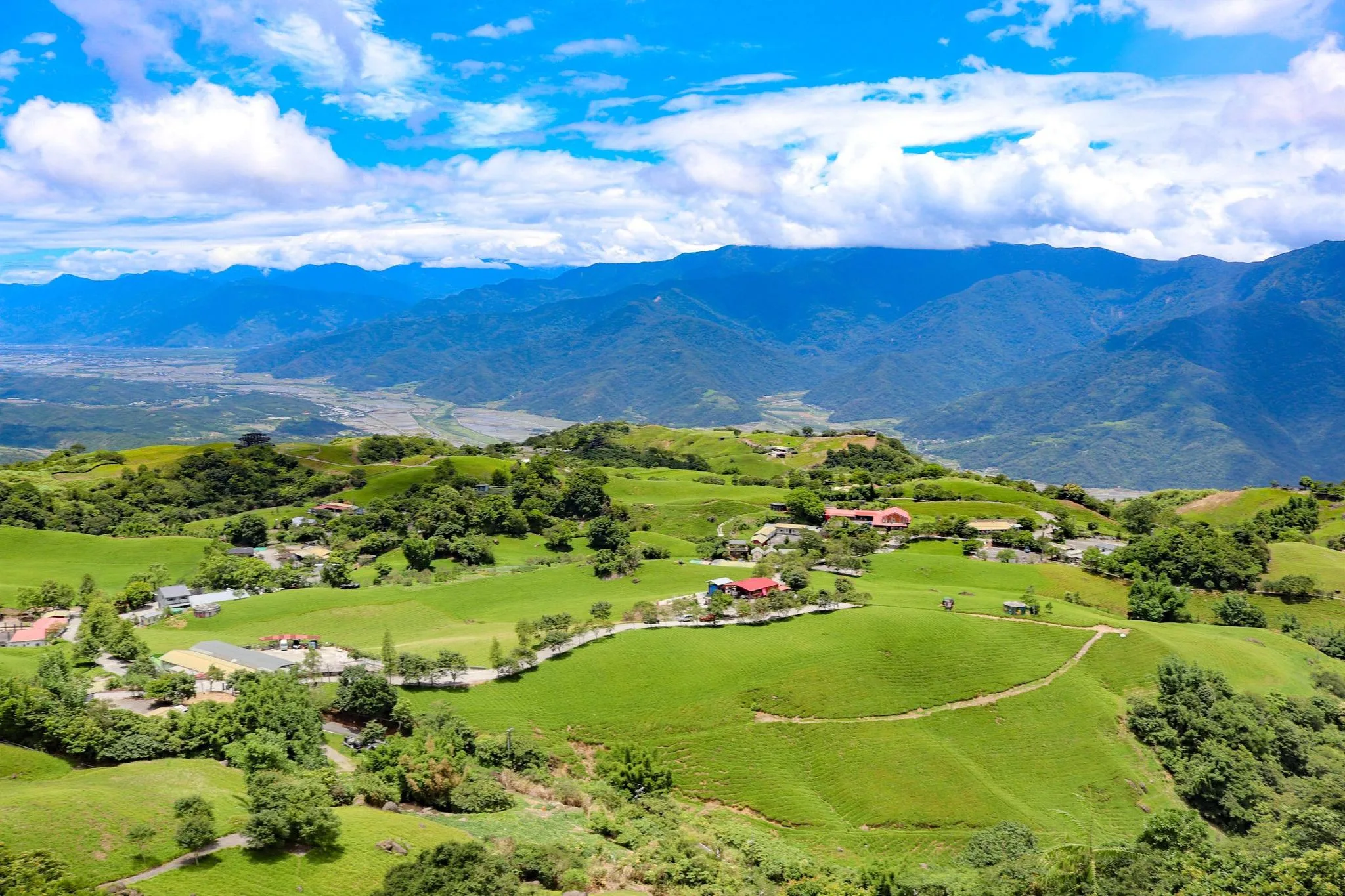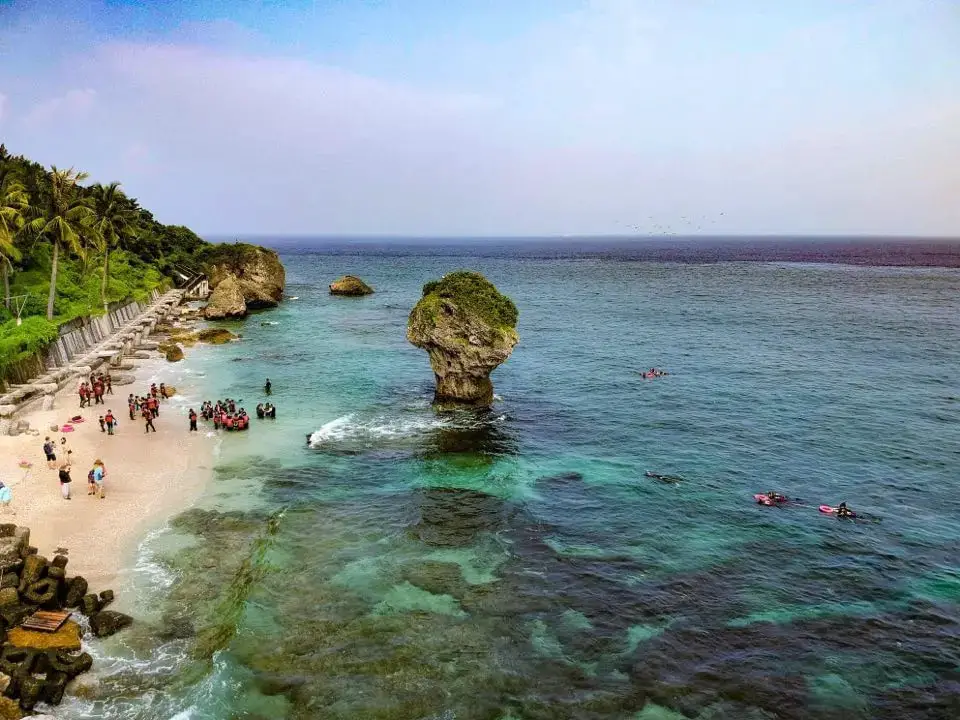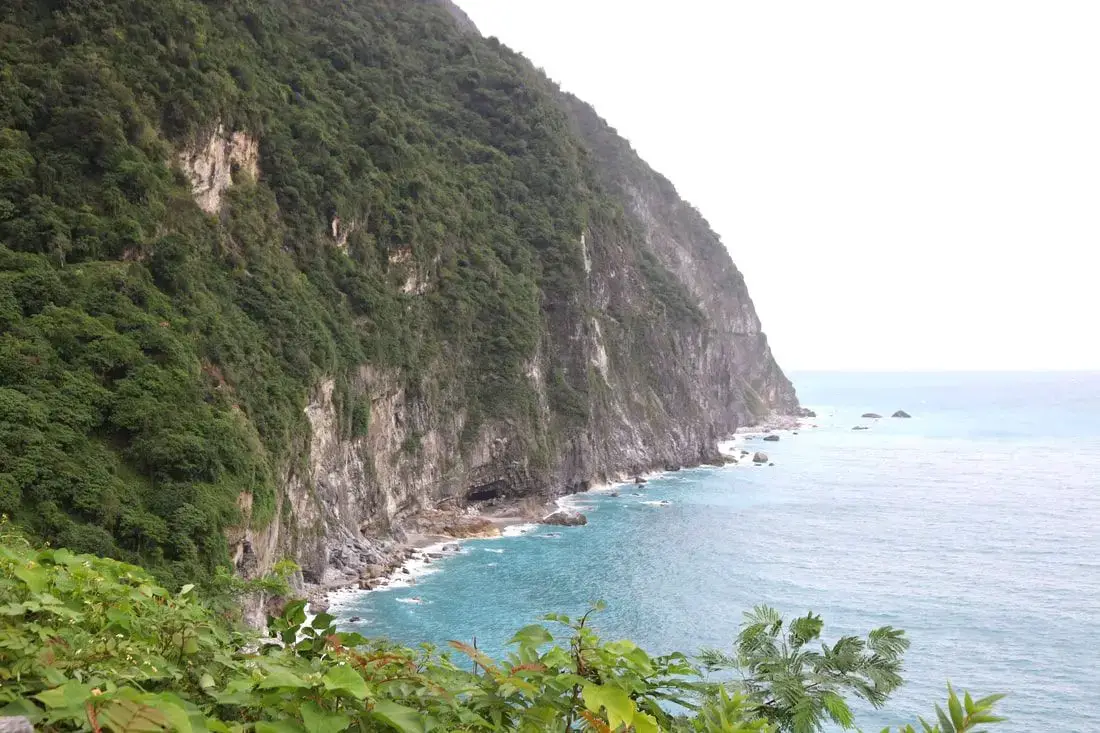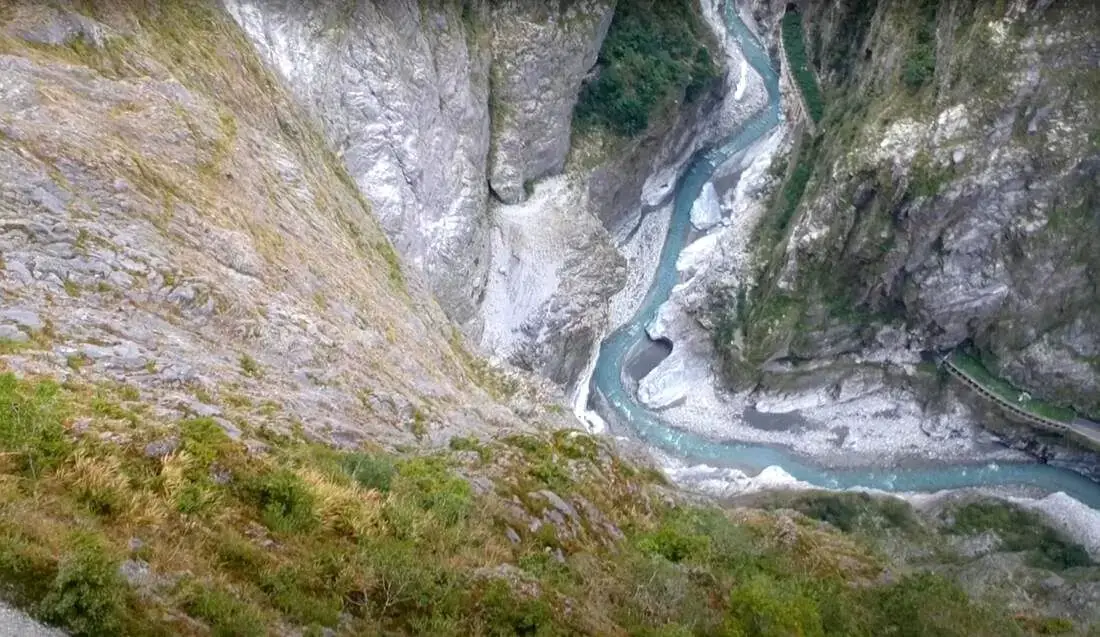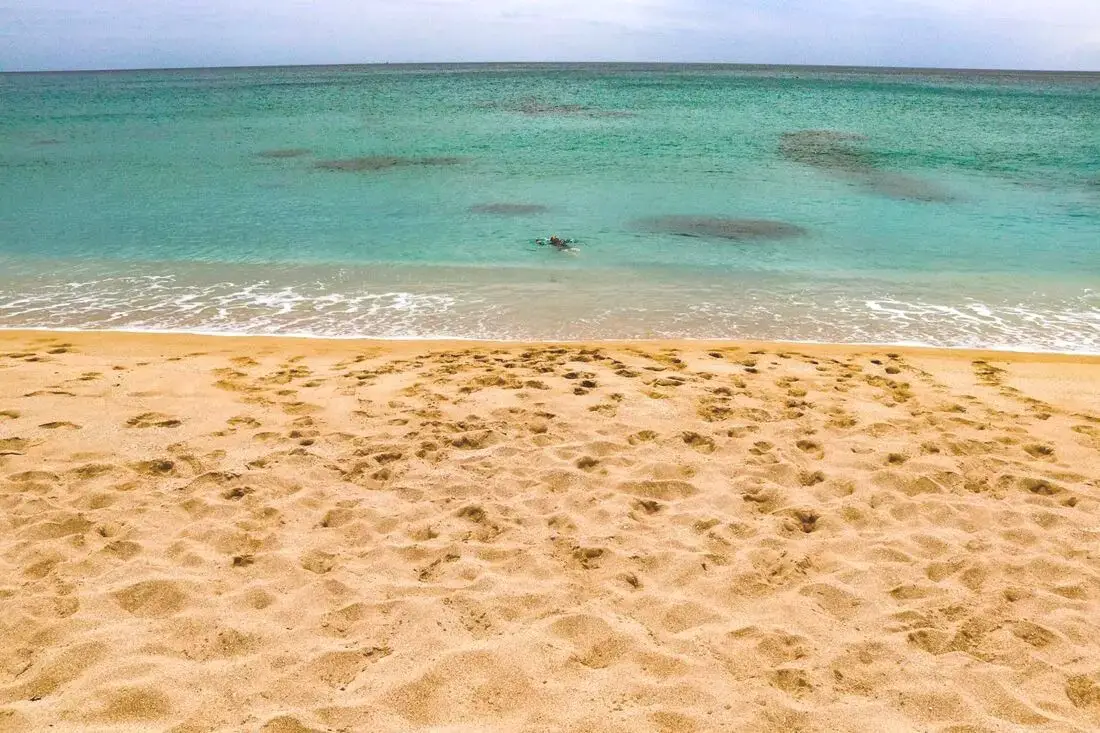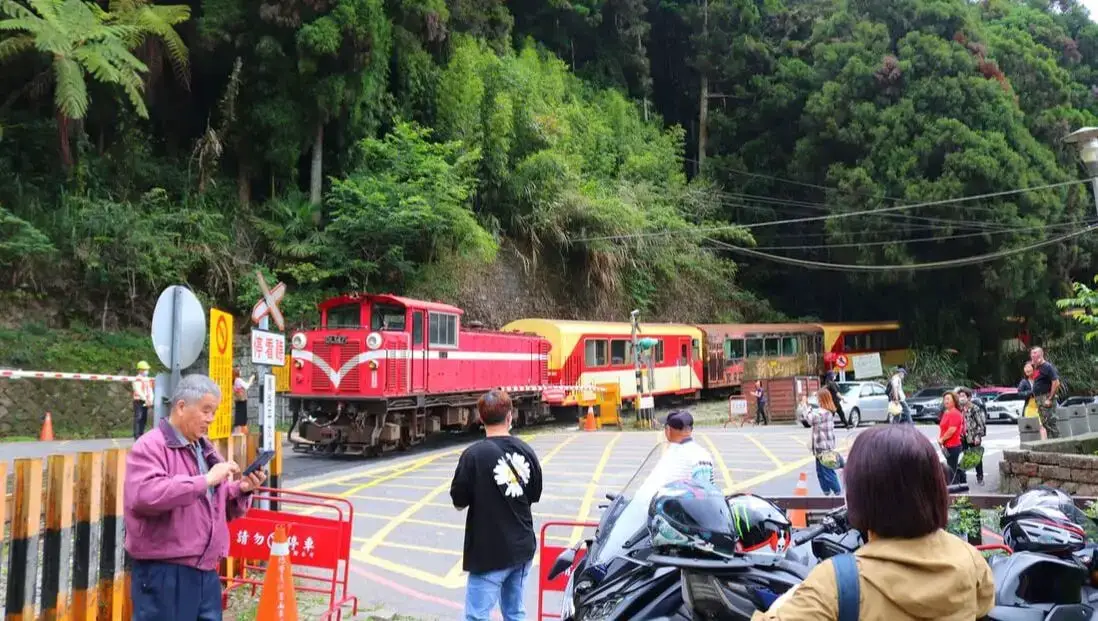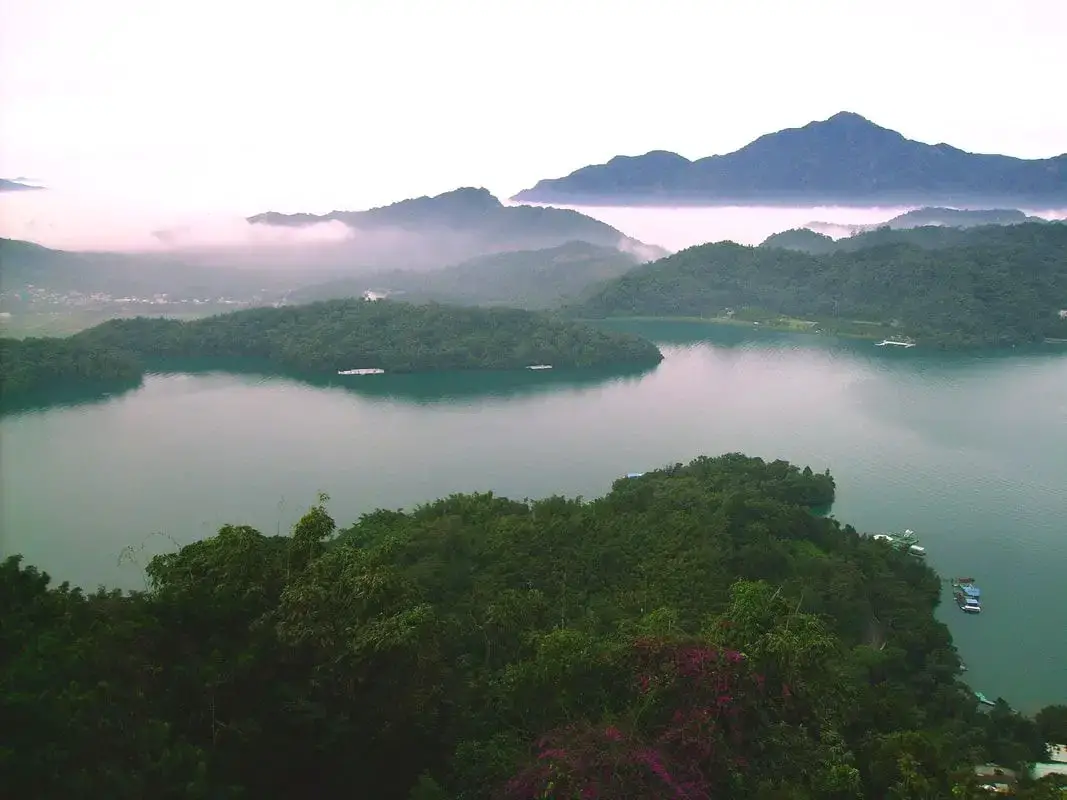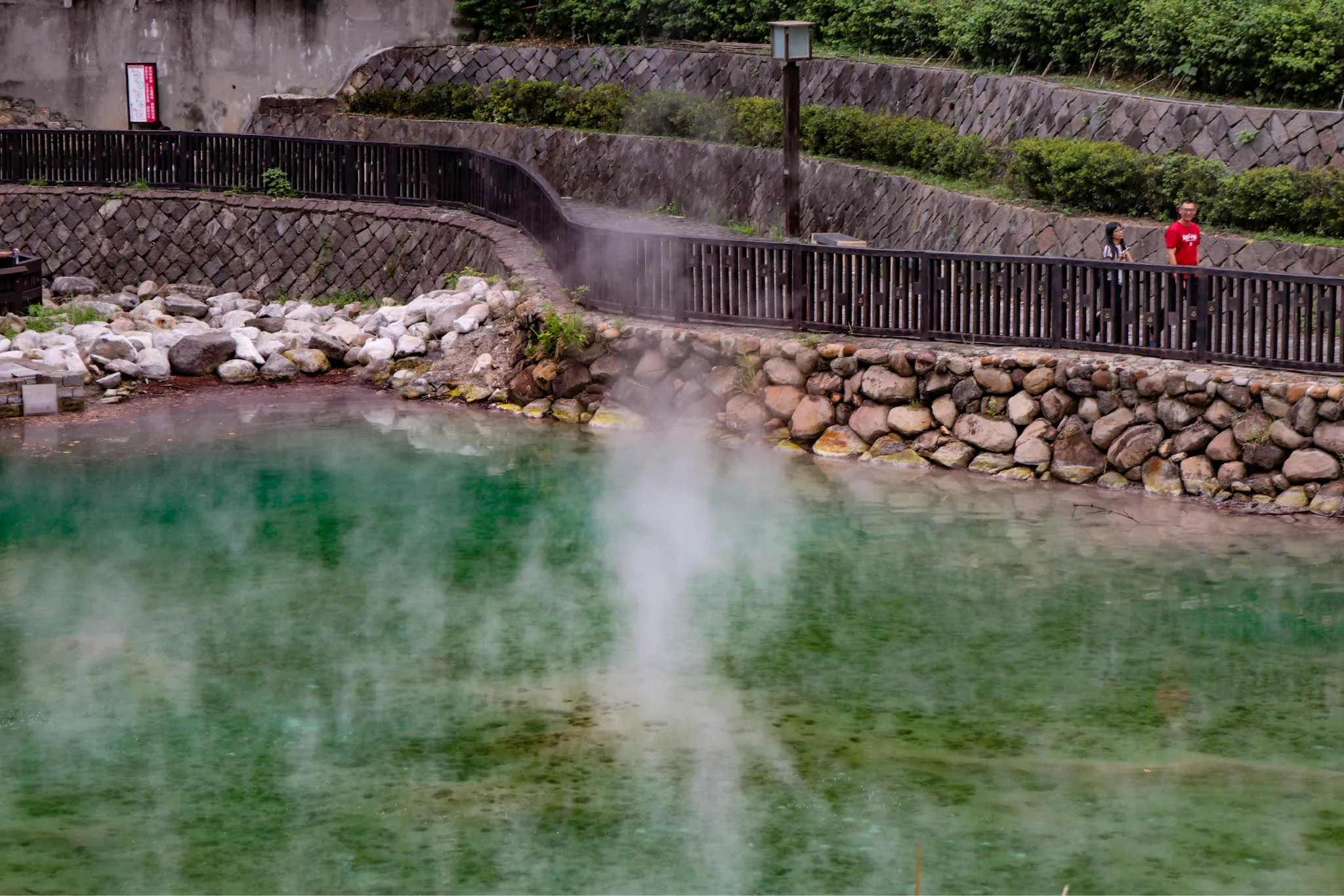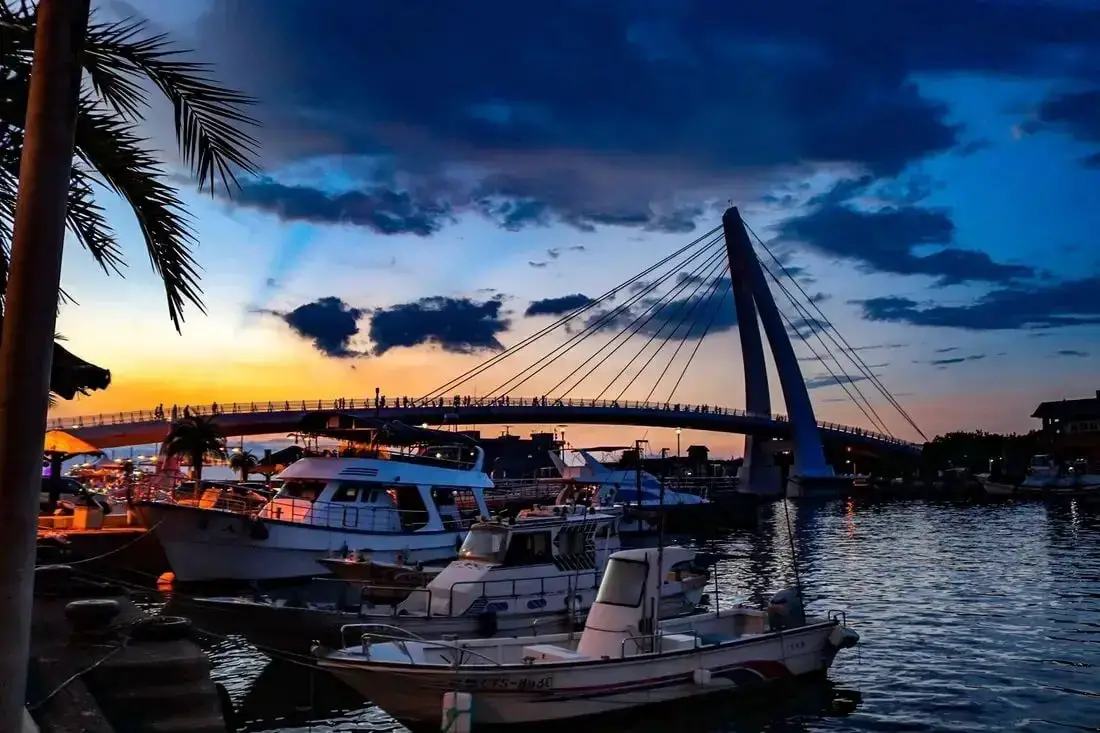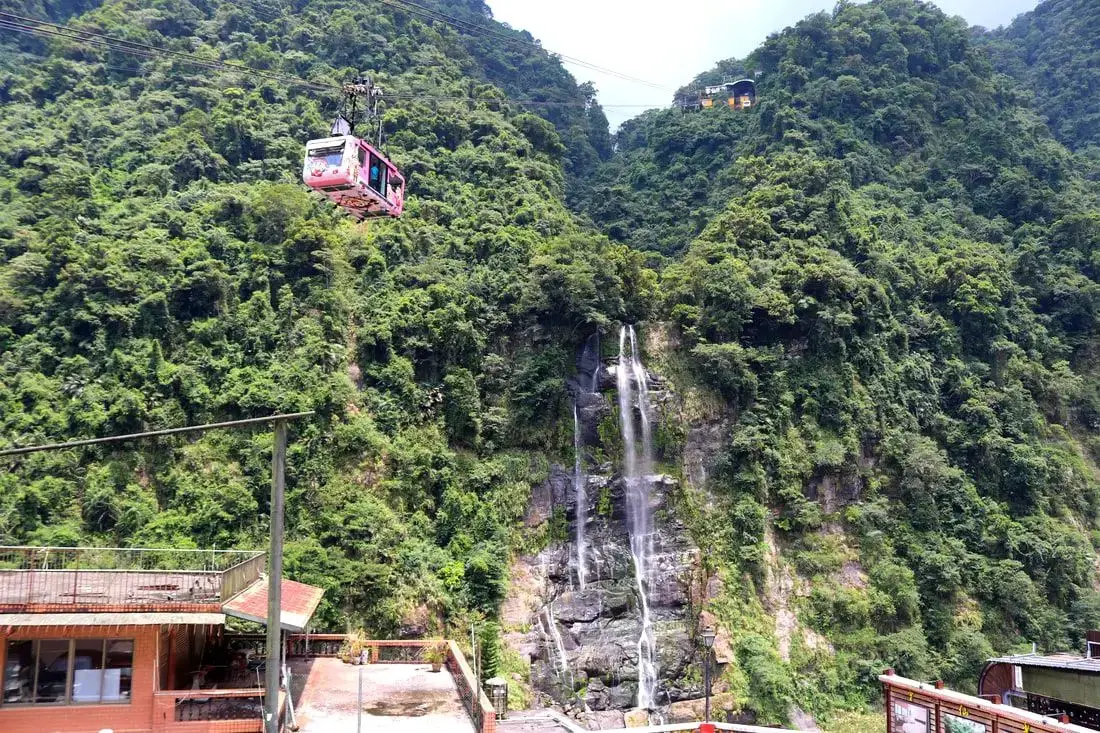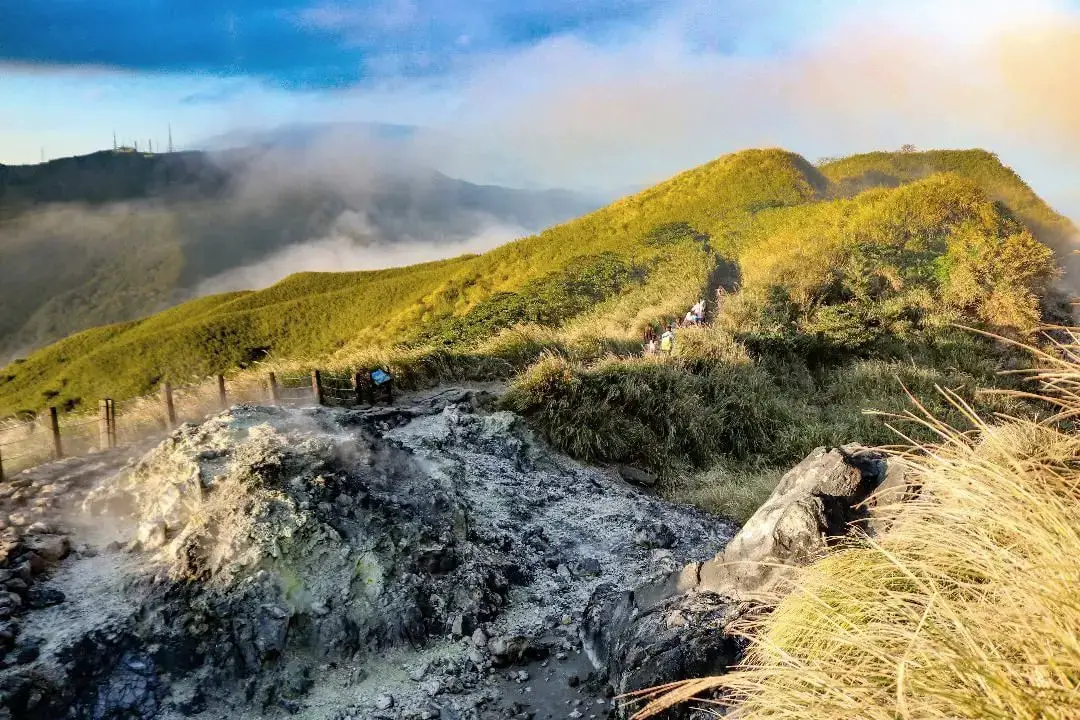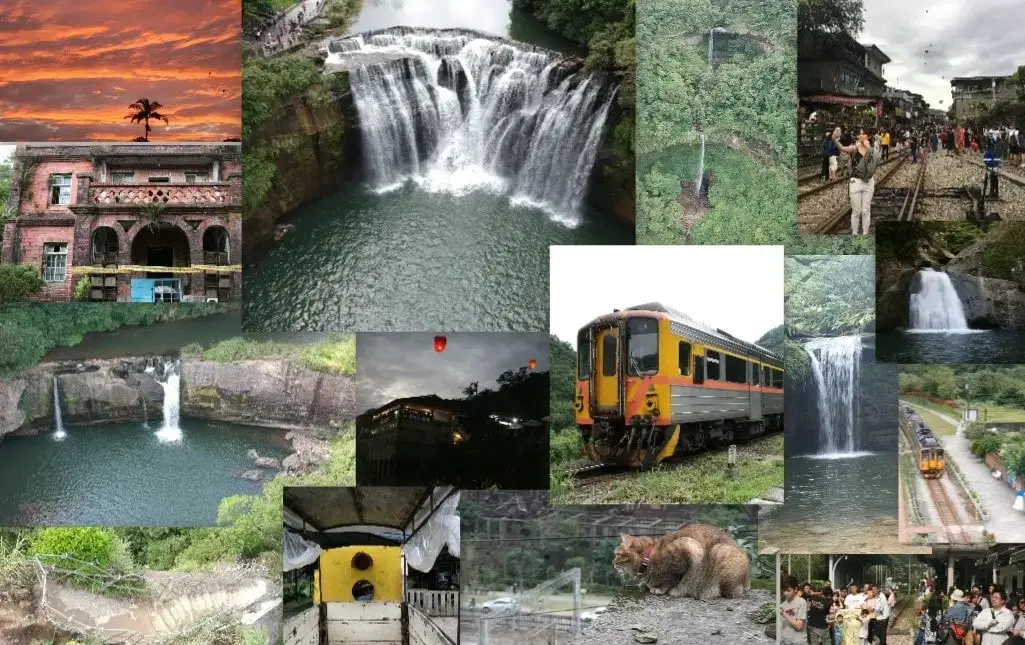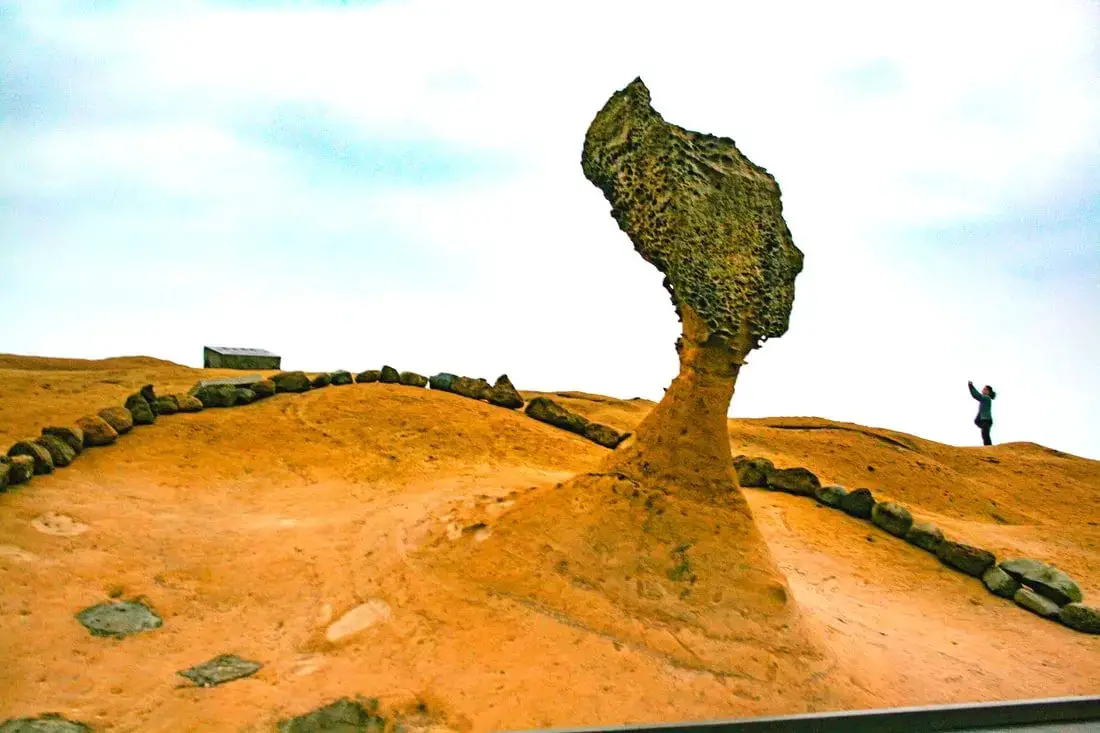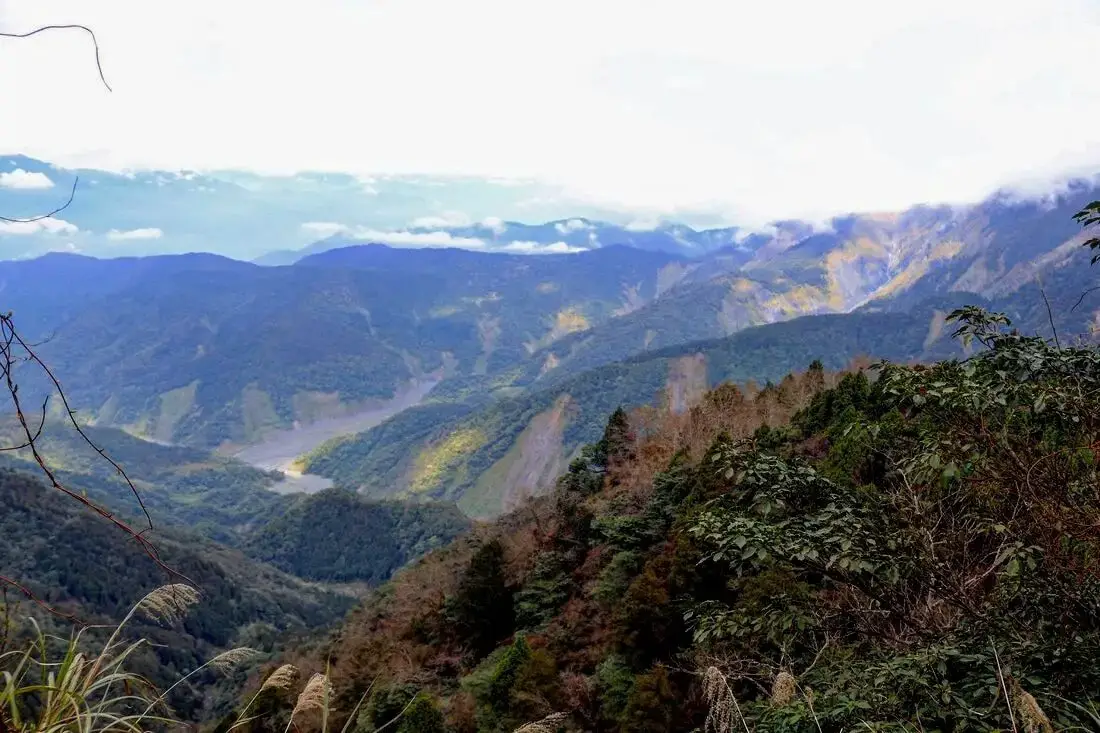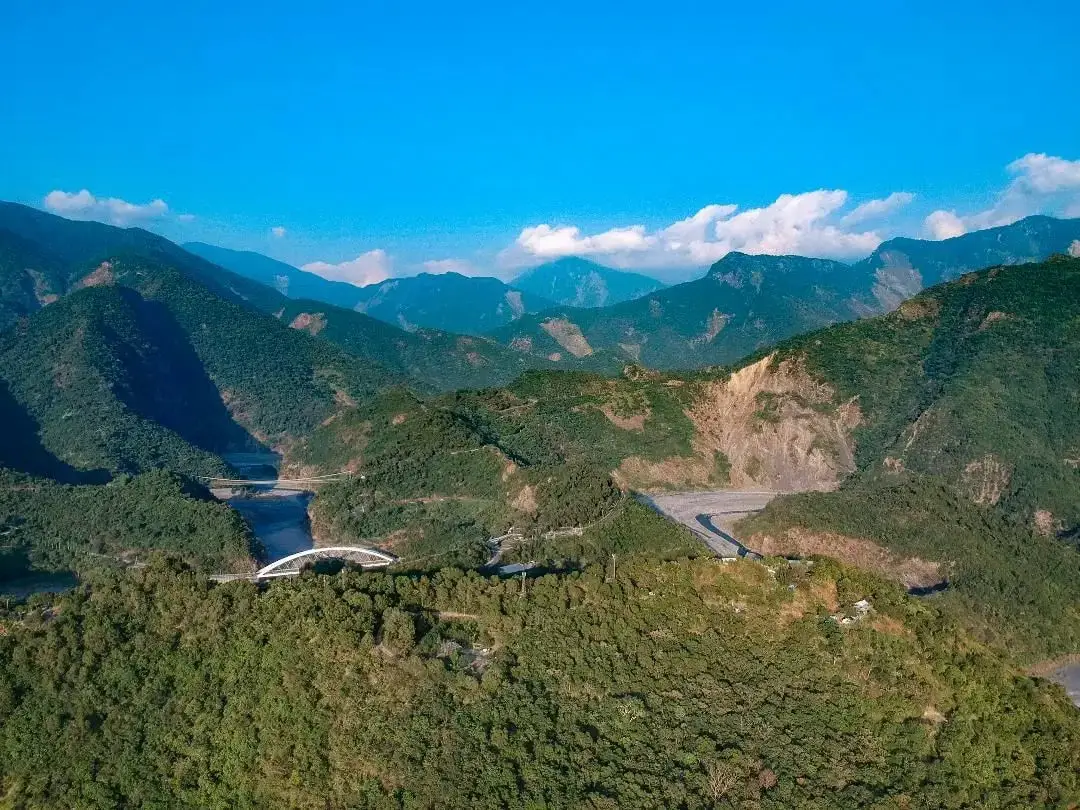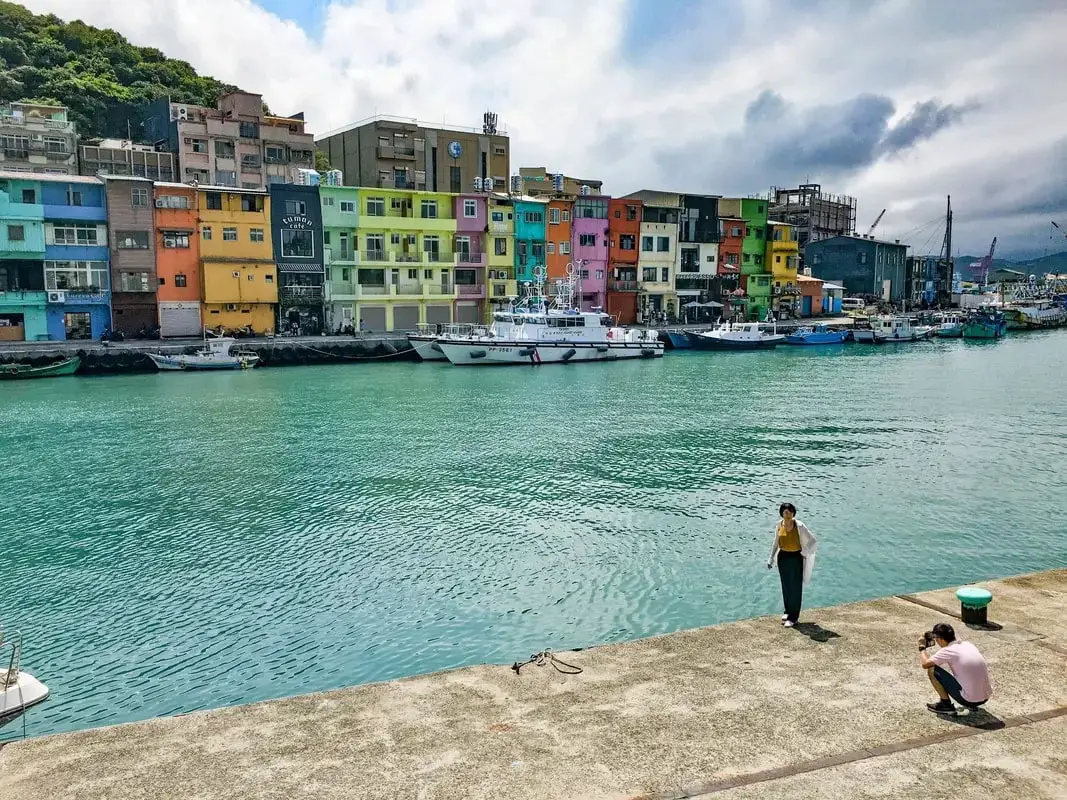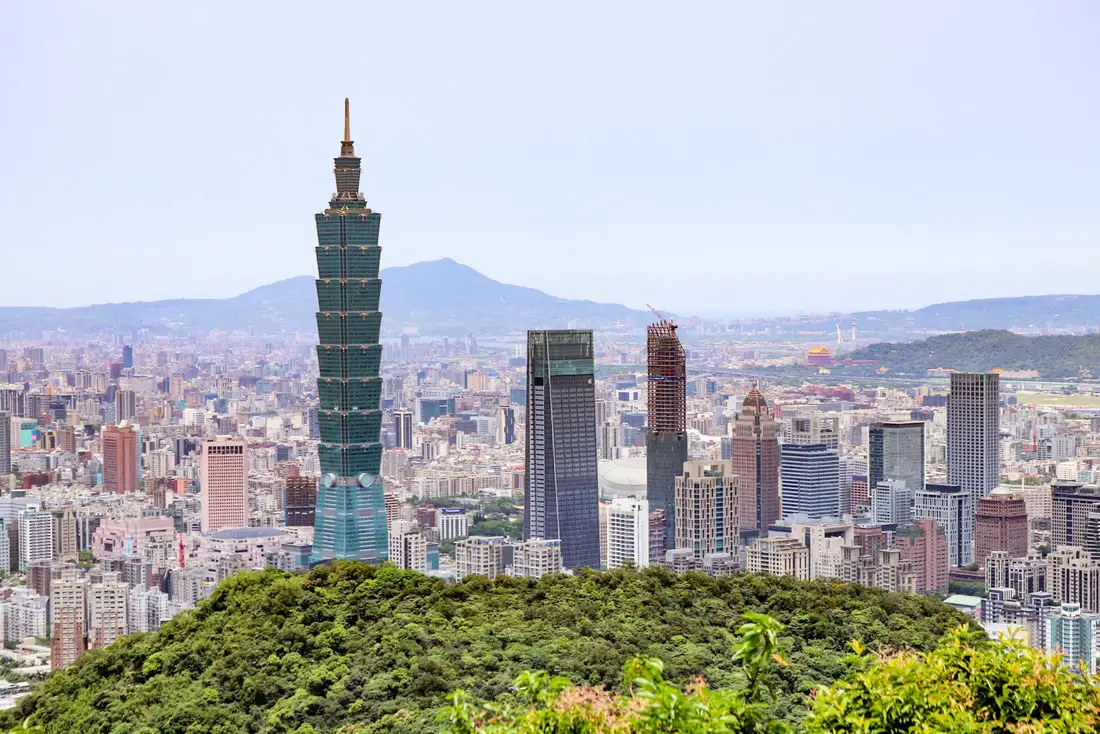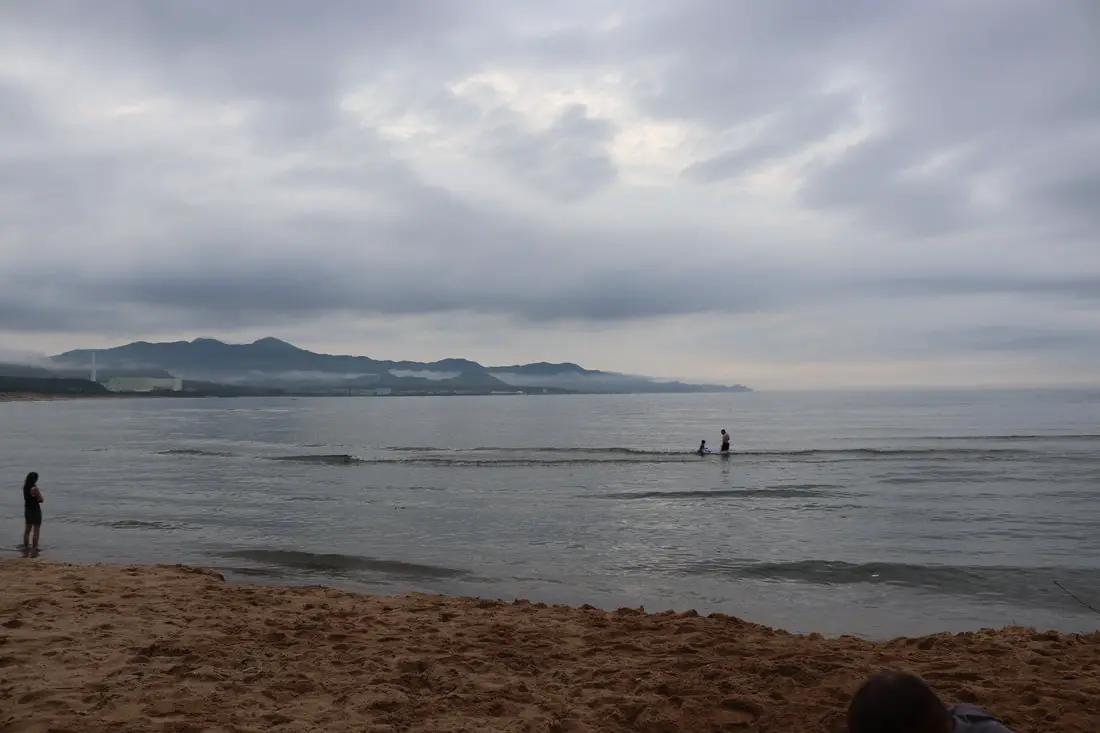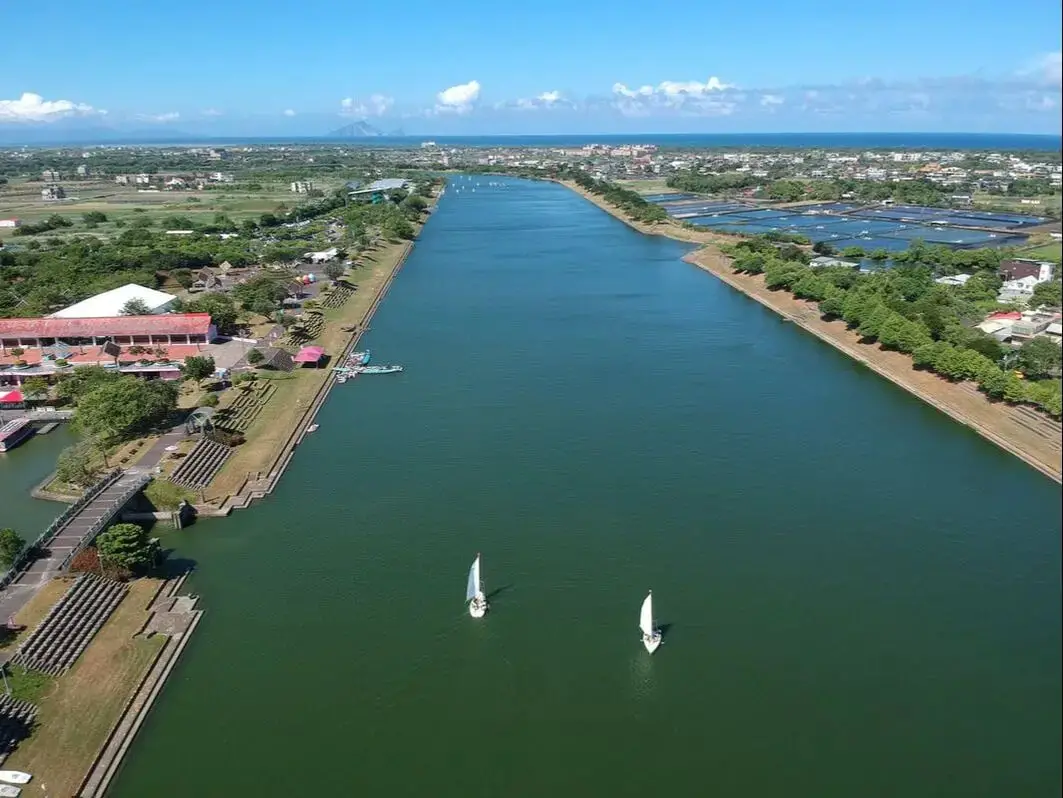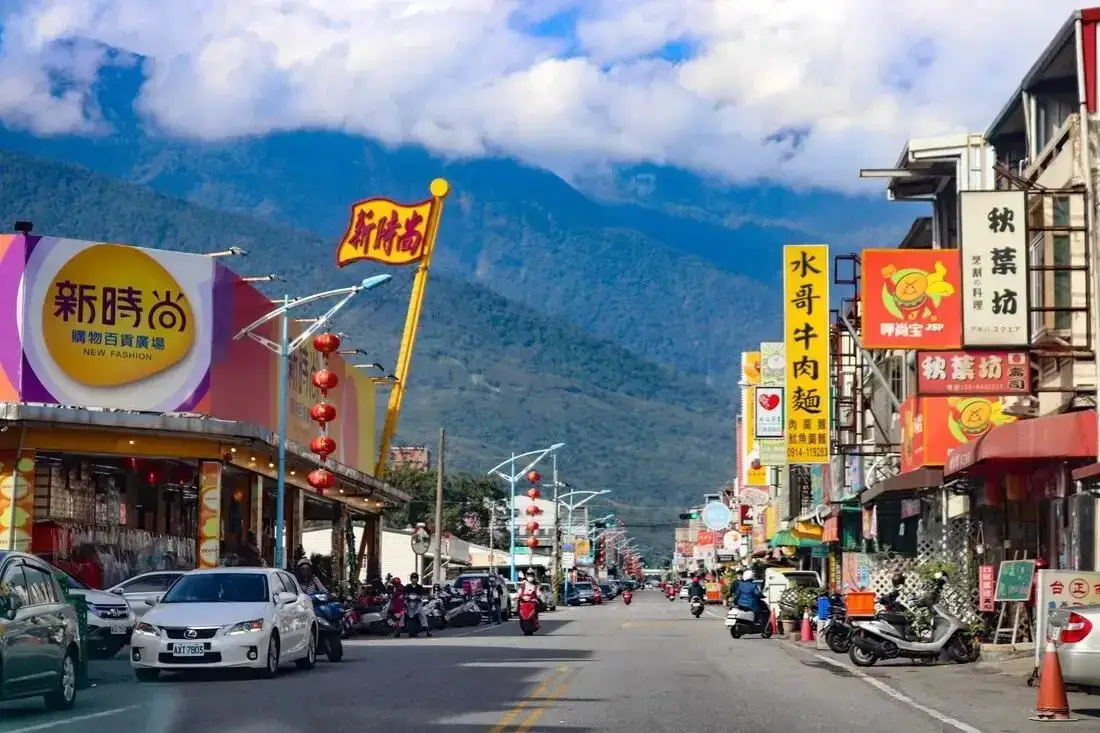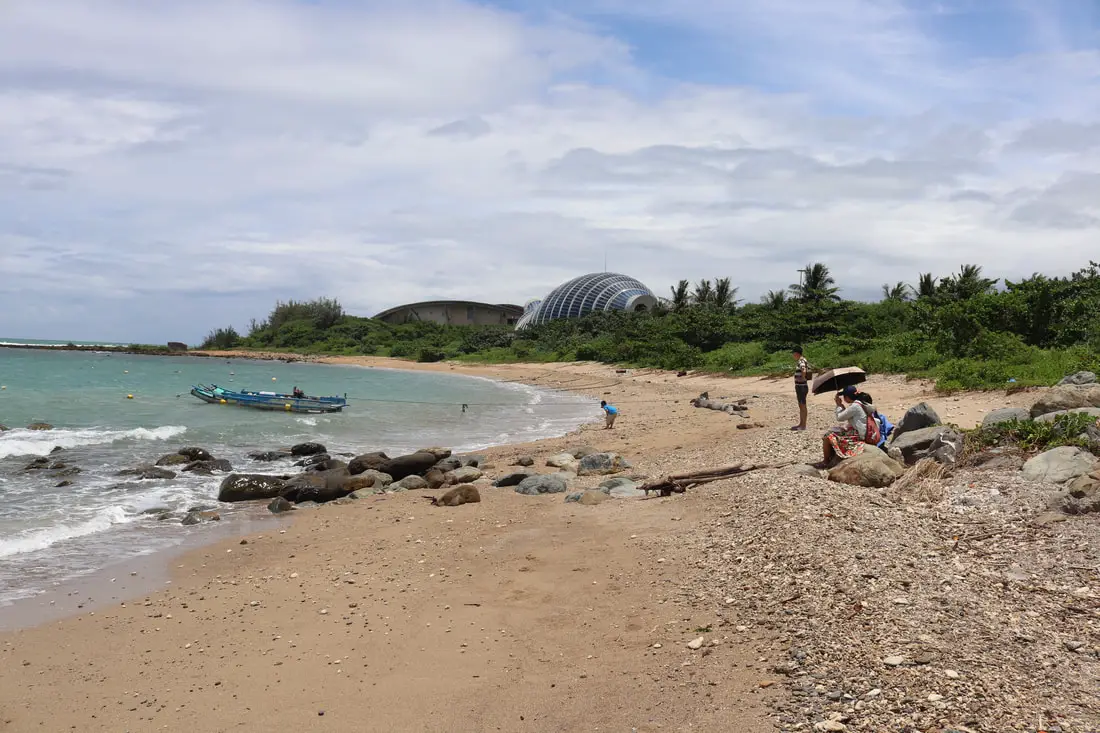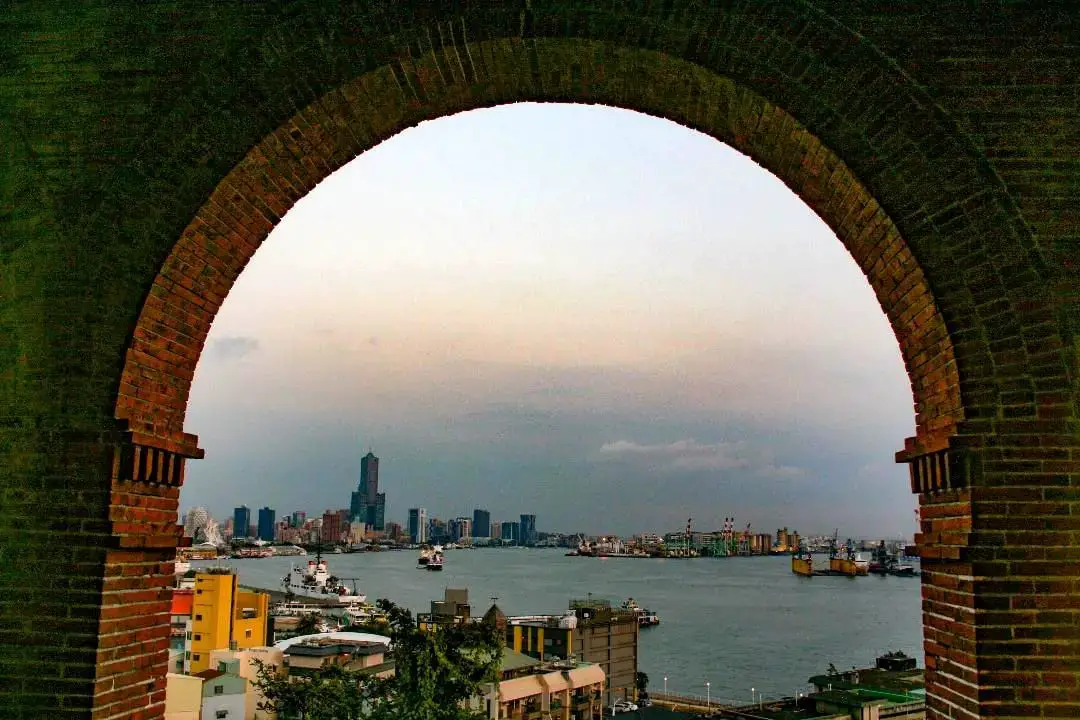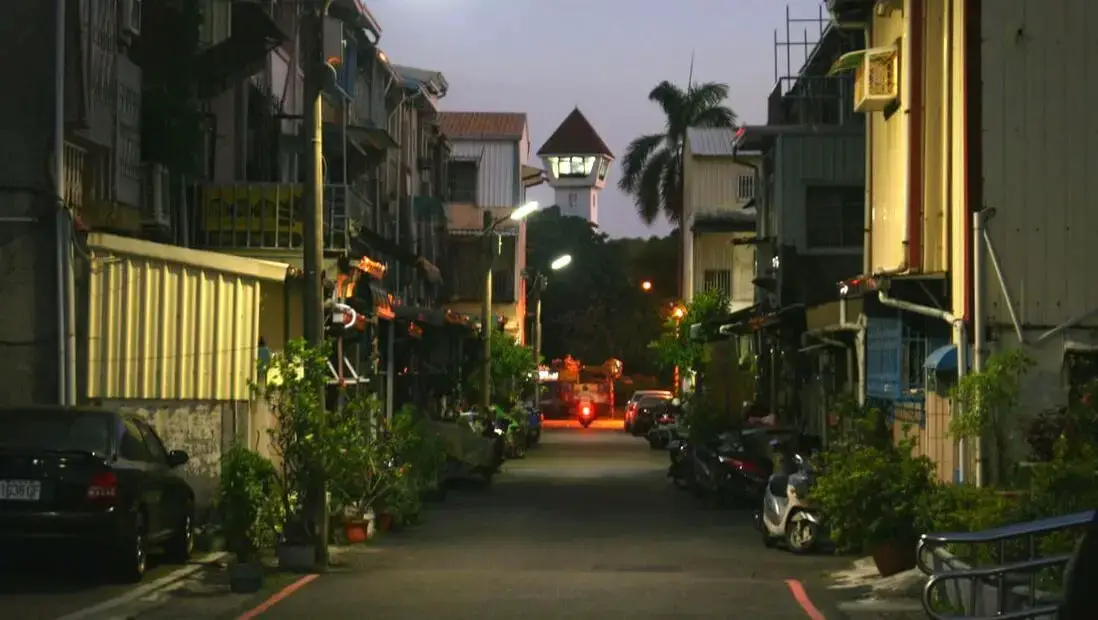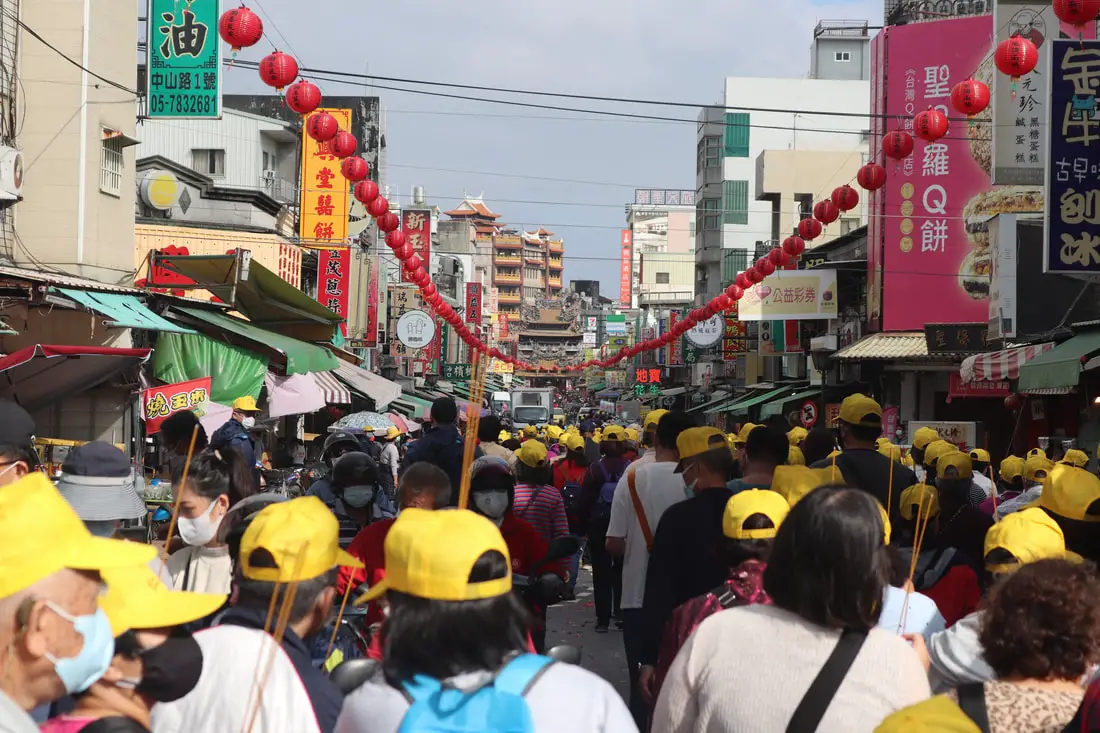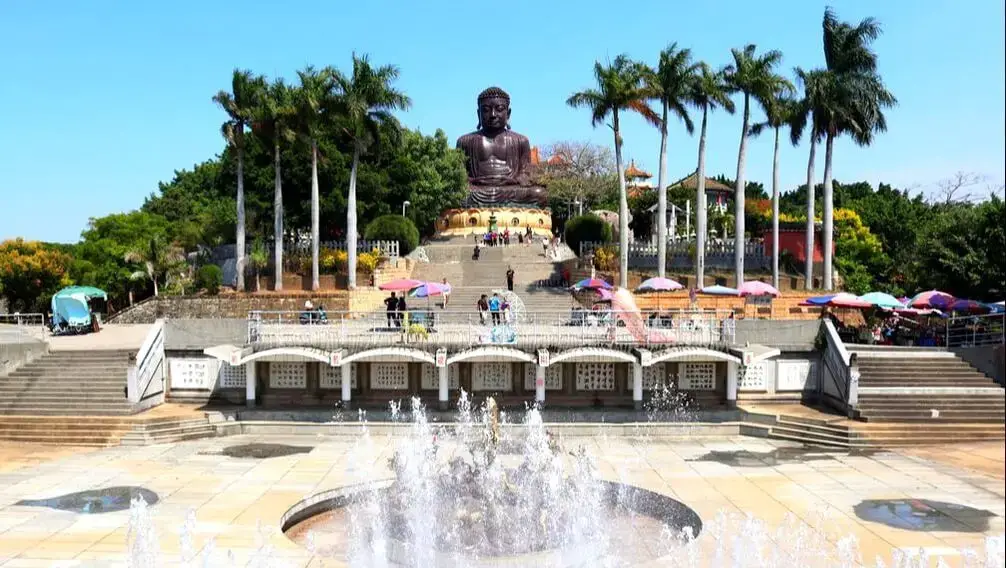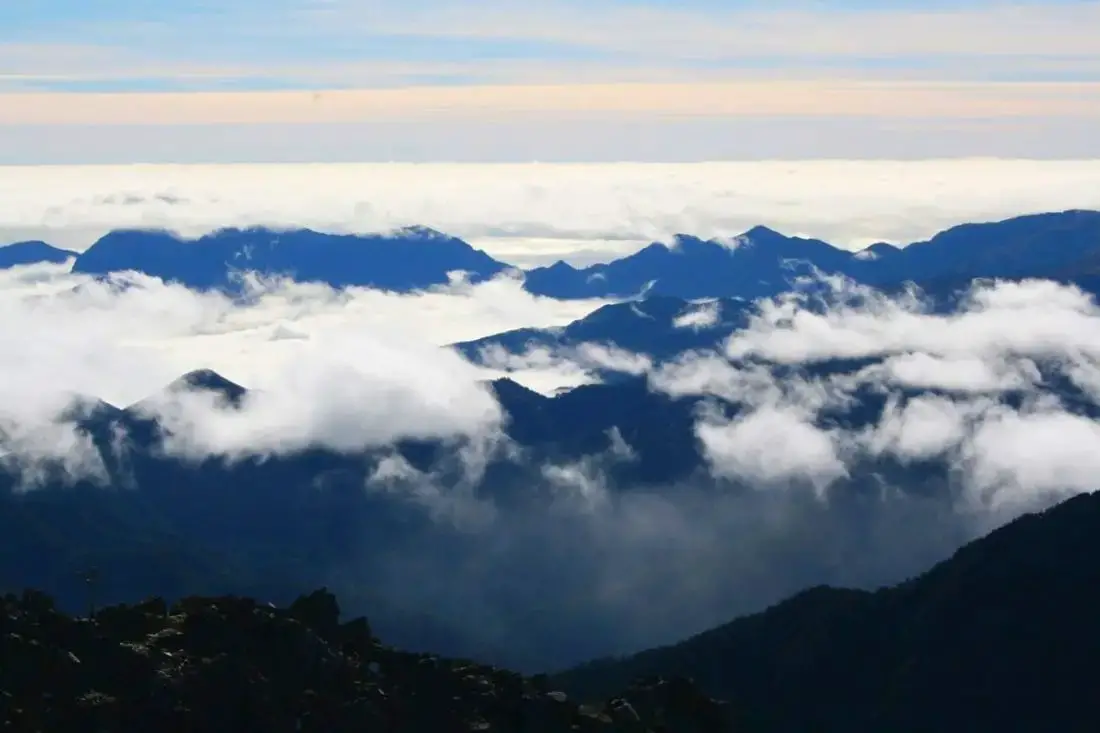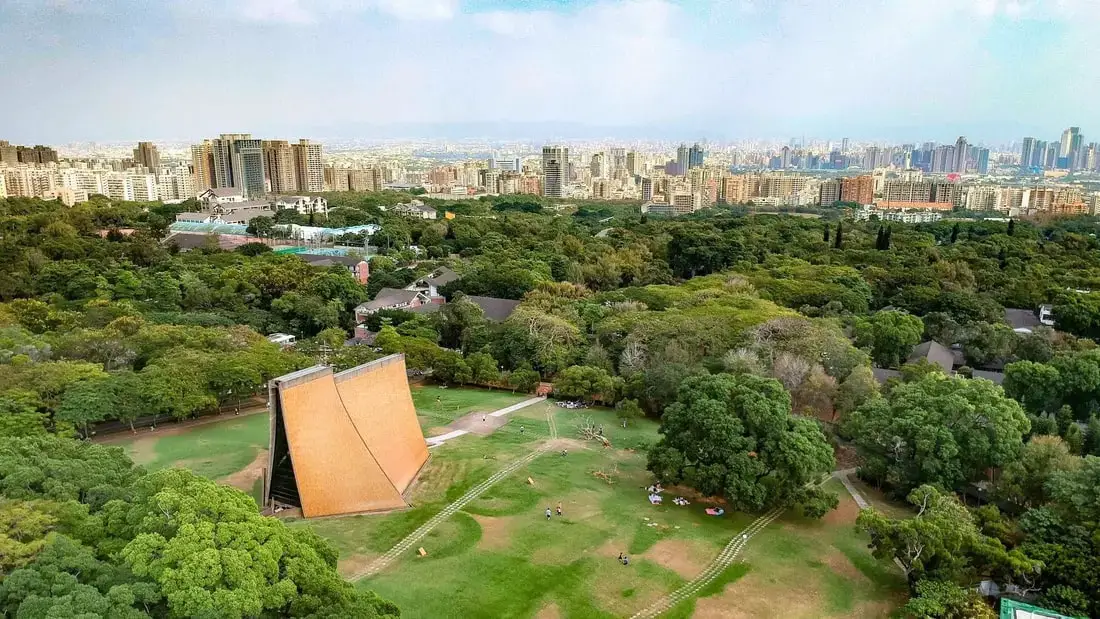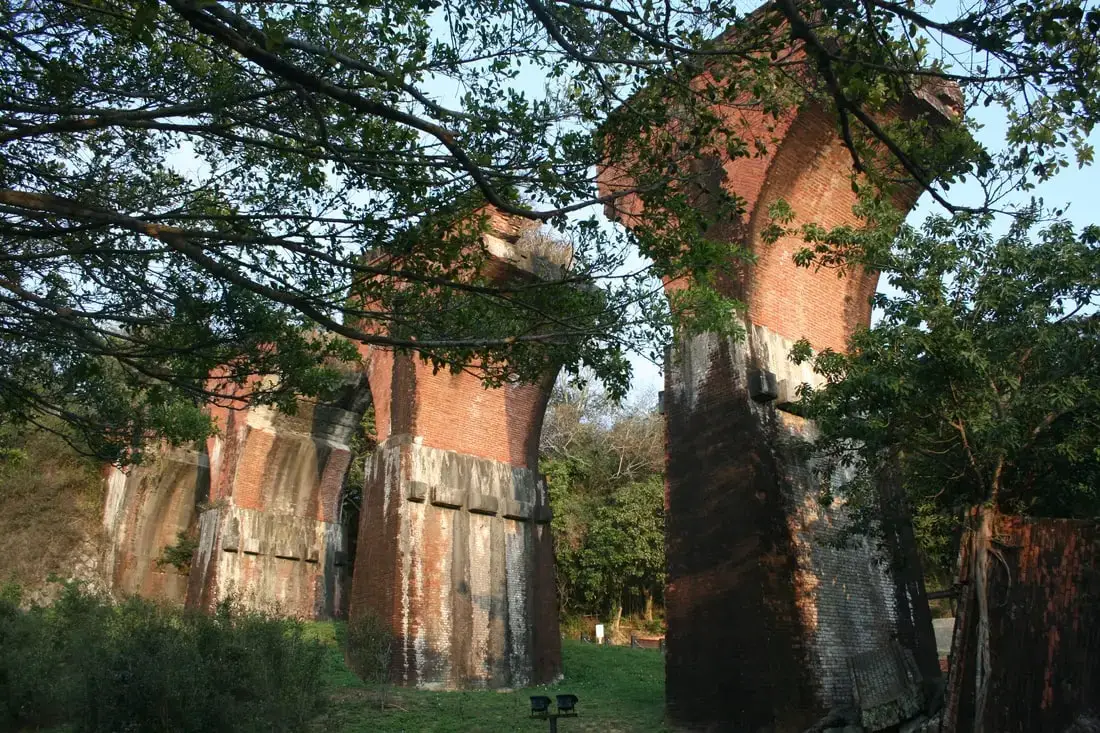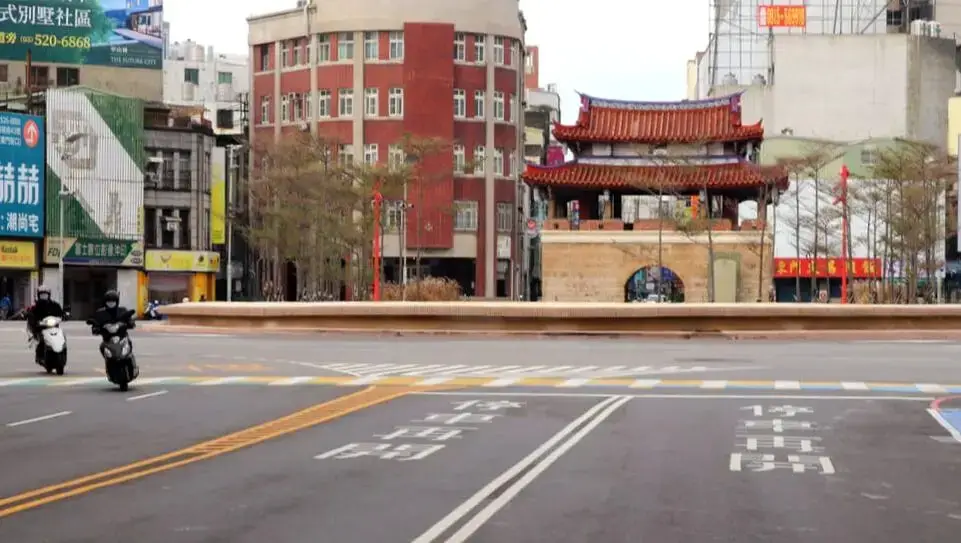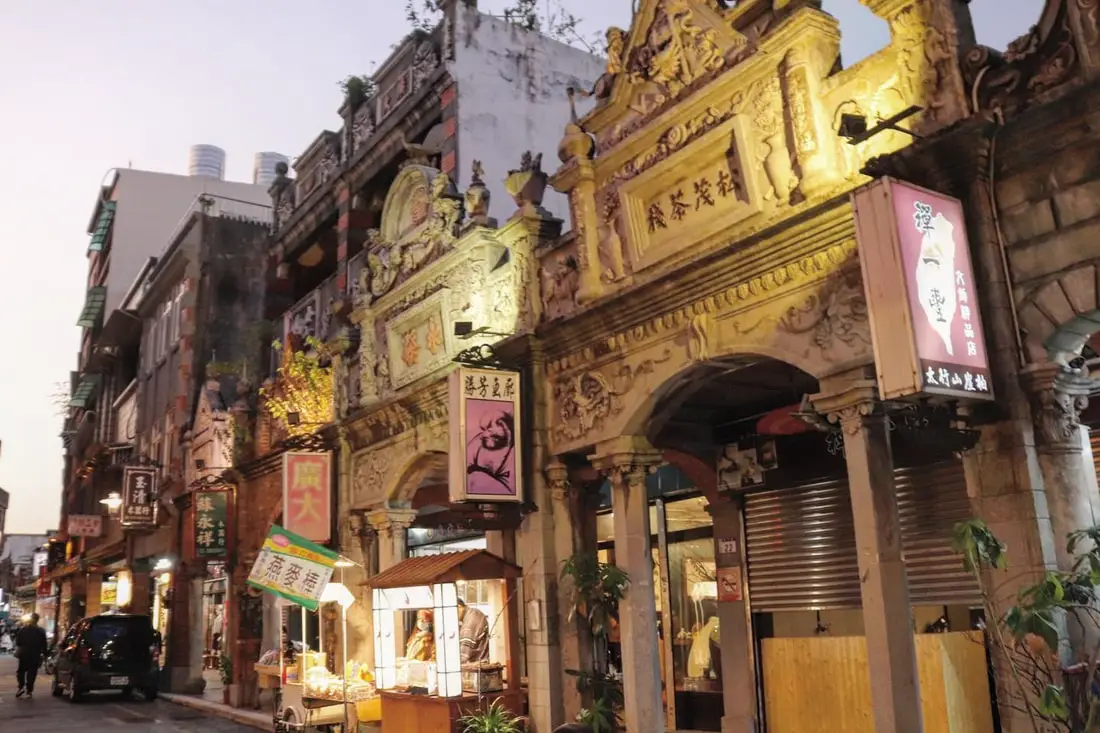Blog Feed
- The Ultimate Travel Guide to Taiwan 台灣旅遊指南英文介紹

Thinking of coming to Taiwan? In this blog, we will share insider tips for planning a great vacation here.
Taiwan is the most friendly country in the world for foreigners and one of the best tourist destinations in the world. Many have called it the best-kept secret in Asia. Taiwan is not usually known as a travel destination, mainly because of PRC China which tries to downplay its existence and the fact that the Taiwan Tourism Bureau does not do a very good job. We will try to make up for that with this blog.When to go:
The best time to go they say is anytime!
There is always a part of Taiwan that is great to visit at any given time of year.
However, most areas are most comfortable around May when it is not too hot and there are no northeasterly winds or typhoons.
The typhoon season lasts from around June to October. The tourist busy season is during summer break from June to August, during which time it can be hard to book a hostel or airplane ticket. Winter is the less crowded season, but the water will be colder, there will be constant wind (which could cancel transportation), and it will rain more often.How to get there:
By Plane:
You can book cheap flights to Taiwan on Trip.com or CheapO Air. You can also search for cheap flights in Taiwan here and here.
You can also book discount tickets for domestic flights within Taiwan on KKday here.
By Boat:
There is a ferry boat between Kinmen and Xiamen, China. That is the only commercial way I know of to travel to Taiwan by boat.Tours:
There are many tours and activities available such as snorkeling, diving, SUPing, Surfing, Speed Boating, Glamping, River tracing, Paragliding, Kayaking, Canoeing, River Tracing, River Rafting, River Tubing, Pack Rafting, Whale Watching, ATV / 4-wheeling, Paintballing, Water Biking, Glamping, Cycling, Ziplining, Horse Riding, and many others, which you can book through Klook here or KKday here.
Where to stay:
Looking for a hotel? We recommend booking through Agoda here, which provides the best quality selection of accommodation on the islands.
Booking.com, Expedia, and Hotels.com are also good choices.How to get around in Taiwan:
By Train:
You can take a train ride around the entire island in about 8 hours. Book tickets via the normal train (TRA) on Klook here.
By HSR:
Taiwan’s HSR runs from north to south along the west coast of Taiwan, and is perhaps the fastest mode of transport available. You can book discount tickets via high speed rail (HSR) on Klook here or KKDay here.
By Bus:
Busses leave hourly from most major cities. You can book inter-city bus on Klook here.
By Scooter:
You can rent a scooter on Klook or KKday. Scooter rental is about 300 NT per day. You can check out our scooter rental guide here.
By Car:
You can also rent a car for about 1500 NT per day. If you are looking for car rentals, you can also search Qeeq here, Klook here, or KKday here. You can also check out our car rental guide here.Map:
Please see a map below of all the places we have blogged about in Taiwan:
Now we will get started with our list of places to visit.
Taiwan’s Outer Islands 台灣的外島
Taiwan’s outer islands are some of the most beautiful and scenic places in the whole country, and each of them can be considered a secret paradise. You can find the best beaches, snorkeling, and diving on these islands. You can also find rich and important historical sites here. Transportation may be difficult, but you will never regret visiting Taiwan’s outer islands, and no trip to Taiwan should be complete without doing it.
Check out our full guide to Taiwan’s outer islands here.Taiwan’s East Coast 台灣東海岸
Taiwan’s East Coast has the most beautiful scenery in Taiwan. From the deepest marble gorge in the world to outer islands, mountains, rivers, and huge sea cliffs, there are unmissable natural wonders for you to explore. In addition, there are endless outdoor activities and water sports that you can take part in here.
Check out our full guide to Taiwan’s East Coast here.Taroko National Park 太魯閣國家公園
If you only have a few days in Taiwan and you want to go somewhere outside of Taipei, you should definitely go to Taroko National Park. On an island full of mountains, rain forests, beaches, and abounding natural beauty, Taroko might just take the top spot as the most beautiful scenic area in Taiwan.
You can check out our full guide to Taroko National Park here.Kenting 墾丁
Yes, you should go to Kenting. Kenting has some of the best natural scenery in Taiwan, from beautiful white sand beaches that are warm year-round to limestone mountains with hundreds of caves and waterfalls to explore. Although it may not be a world-class beach resort destination yet, it should definitely be on your list on your trip to Taiwan.
See our full guide to Kenting here.Alishan 阿里山
Alishan National Scenic Area is one of the most famous mountain areas in Taiwan (aka Mount Ali, or Ali Mountain). Formerly a timber harvesting area during the Japanese Era, it still has a working rail system for park visitors to ride around the mountain. The mountain villages, ancient forests, waterfalls, hiking destinations, and tea plantations have made it a popular destination for tourists. It is also a popular destination to see the sunrise over a sea of clouds. Overall, it is one of the most iconic and well-known mountain destinations in Taiwan.
Check out our full guide to Alishan here, and our full guide to the Alishan Forest Railway here.Sun Moon Lake 日月潭
Sun Moon Lake is a beautiful scenic area in Taiwan and a popular tourist destination. Besides the lakeside scenery, one can also enjoy boat rides, Taiwanese street food, gift shops, temples, a gondola, an Aborigine theme park, and more. It is for sure a must-see destination for anyone coming to vacation in Taiwan.
Read our full guide to Sun Moon Lake here.Beitou Hot Springs 北投溫泉

Beitou is Taiwan’s Premiere Hot Spring area (北投溫泉). Originally built by the Japanese on natural hot spring water flowing down from Yangmingshan, this area is now springing with hot spring baths, hotels, museums, hikes, restaurants, and more. It is one of the best day trips near Taipei. In this guide, we will tell you how to enjoy this area like a local, and at the same time soak like Japanese royalty. Check out our full guide to Beitou here.
Tamsui 淡水
Tamsui District of New Taipei is famous for its delicious food and historical atmosphere. It is one of the most popular and well-known areas in all of Taiwan. Some local delicacies here include A-gei, iron eggs, fried squid, and other seafood. Historical places near here include Fort San Domingo, Hobe Fort, Tamsui Old Street, Bali Old Street, and the Shihsanhang archaeological site. There is plenty here to see and do for almost every kind of traveler.
Check out our full guide to Tamsui here.Wulai 烏來
Wulai Waterfall is the highest waterfall in northern Taiwan. Here you can find a street with snacks and restaurants, and a gondola that leads to a second tier of the waterfall and an amusement park. In addition, there are hikes, wildlife, and endless mountain scenery to explore.
Check out our guide to Wulai here.Yangmingshan National Park 陽明山國家公園
Yangmingshan National Park is a mountainous area in Taipei and New Taipei, known for its volcanic activity, hiking trails, wildlife, waterfalls, hot springs, and sulfur vents. It is definitely worth a stop on your trip to Taipei.
Check out our full guide to Yangmingshan National Park here.Pingxi Railway 平溪支線鐵路
The Pingxi Railway in New Taipei has some of the most popular attractions in Northern Taiwan. With a total of 7 stations (plus 2 if you count Ruifang and Houtong), there are endless places to explore, eat, hike, and enjoy Taiwan’s history, culture, and natural beauty all in one place.
Check out our full blog on the Pingxi Railway here.Taiwan’s Northern Coast 台灣北海岸
Taiwan’s northern coast is an amazing, beautiful area with unique geology and rocks, lots of sandy beaches, amazing mountain views and hikes, old streets, night markets, historical sites, and much more to discover. Don’t not come here.Check out our full guide to Taiwan’s Northern Coast here.
Taipingshan 太平山
Taipingshan (aka Taipingshan National Forest Recreational Area 太平山國家森林游樂區) is a magical mountain paradise in Datong Township of Yilan County in Taiwan. It has an old Japanese-era logging railroad track which has mostly been abandoned, but part of it has been restored with a working train. In addition, there are hot springs, Taiwan’s largest alpine lake, hikes, wildlife, and endless mountain scenery to explore.
Check out our full guide to Taipingshan here.Maolin 茂林
Maolin District of Kaohsiung City is an amazing outdoor paradise and my favorite place in Taiwan. In this mountainous district of Kaohsiung, you can find waterfalls, streams, hot springs, butterflies, aboriginal culture, and great views, all by the roadside! Popular activities include swimming, hot spring bathing, river tracing, camping, and hiking.
Check out our full guide to Maolin here.Keelung 基隆
Keelung is a small city in the northern part of Taiwan, known for its deep harbor. Here you can find interesting historical sites dating back to the Dutch, Spanish, Qing, and Japanese colonization of Taiwan. Now the town is a bustling urban area with tons of food options, amazing coastline, waterfalls, mountains, and much more to explore. It should definitely be on your bucket list of places to visit in Taiwan.
Check out our full guide to Keelung here. Taipei City 台北市
Taipei City is the capital of Taiwan and its most vibrant city. You will find amazing food, convenient public transportation, amazing historical sights, and beautiful mountain scenery here.
Are you wondering what to do, see, and eat during your trip to Taipei? We have all the answers here in this ultimate travel guide. From the abundant food options, night markets, historical sights, mountains, and natural beauty of the area, there are endless activities and sights to enjoy for any amount of time.
Check out our full guide to Taipei here.New Taipei 新北市
New Taipei is the area surrounding Taipei City and Keelung, and includes one of Taiwan’s most amazing coastlines and beautiful natural scenery including mountains, waterfalls, and hot springs. It also includes Taiwan’s largest population.
Our guide to New Taipei is still under construction, but you can see our latest blogs about New Taipei on this tab here. Yilan County 宜蘭
Yilan is a gem on Taiwan’s northeast coast. It has rugged mountains, waterfalls, a flat coastal plain, a volcanic island, hot springs, and some of the best beaches in Taiwan. In addition you can find night markets, seafood markets, museums, and much more to explore here. It is definitely worth a stop on your next trip to Taiwan.
Check out our full guide to Yilan here.Hualien 花蓮
Hualien is the largest county in Taiwan and is considered by many to be the most beautiful. It includes a breathtaking coastline along the Pacific Ocean, including cliffs thousands of meters high, marble gorges, fertile valleys, and a large section of Taiwan’s central mountain range. Hualien is simply a must-stop location on your trip to Taiwan.
Check out our full guide to Hualien here.Taitung 台東
Taitung has some of the most beautiful scenery in Taiwan, two amazing offshore islands, a striking coastline, deep mountains, and most of all it is bursting with unique aboriginal culture, with indigenous people making up over one-third of the population. It is an unmissable stop on your next trip to Taiwan. Here we have compiled our full guide to Taitung County.
Check out our full guide to Taitung here.Pingtung 屏東
Pingtung is Taiwan’s southernmost county and includes the best beaches, the best outer island, some of the best mountains, rivers, and waterfalls, and also interesting historical and cultural sites. It should definitely be on your list on your next visit to Taiwan.
Check out our full guide to Pingtung here.Kaohsiung 高雄
People often don’t realize that Kaohsiung has a lot to offer to tourists. There are many amazing historical and natural sites to see, as well as amazing food, shopping, and interesting culture. Many of the places down south aren’t represented as well in English as other sites in Taipei, which is why we want to help everyone realize what a great place it is. I lived in Kaohsiung for three years and it was like living in paradise every day (I wish I still lived there).
See our full guide to Kaohsiung here.Tainan 臺南
Tainan is the oldest city in Taiwan and was the capital of Taiwan for over 200 years. It is also said to be the culinary capital of Taiwan, with many traditional Taiwanese snacks that originated here. Surrounded by historical sites, from the Dutch, Koxinga, and Qing Dynasty, it is a great place to enjoy Taiwan’s interesting history and its delicious cuisine.
You can check out our full guide to Tainan here.Chiayi 嘉義

Chiayi is a mostly rural county in south-central Taiwan. Despite its relatively small population compared to other counties in Taiwan, it has some of the most beautiful scenery, delicious local food, and interesting history. Come for Alishan, and stay for everything else you find along the way.
Check out our full guide to Chiayi here.Yunlin 雲林
Yunlin is a rural county in western Taiwan that for many expats is simply a large landmass on their way to another destination. However, there are many worthwhile places to visit here, such as interesting historical sites, natural beauty, and rich culture worth exploring. Check out our full guide to Yunlin here.
Changhua 彰化
For you expats or foreigners who have never left Taipei, Changhua is a large mostly rural county in central Taiwan. For years I myself never visited, because I didn’t know what was there and had no reason to go. It turns out there are quite a few attractions here in this secret paradise.
Below I will list some of the best places in Changhua that I have visited. I will be sure to update this blog as I visit more places later.
Check out our full guide to Changua here.Nantou 南投
Nantou lies at the heart of Taiwan and is its only landlocked county. It is known for its rugged natural landscapes and mountains and includes the highest mountain in East Asia. If you come to Taiwan you should definitely pass through this place and stop by at some of the sights we will mention below.
Check out our full guide to Nantou here.Taichung 台中
Taichung is the second largest city in Taiwan and includes a vibrant city, delicious food, amazing coastline, and dazzling mountains. In addition, Taichung’s central location in Taiwan makes it easy to visit other nearby counties. In this blog, we will show you some of the most worthwhile sites to see on your next trip to Taichung.
Check out our full guide to Taichung here.Miaoli 苗栗
Miaoli is a large rural county in central Taiwan. For years I myself never visited, because I didn’t know what was there and had no reason to go. It turns out there are quite a few attractions here in this secret paradise.
Check out our full guide to Miaoli here.Hsinchu 新竹
Hsinchu is not only Taiwan’s technological hub, but is also rich with historical sights, Hakka culture, and natural beauty. It has numerous old streets, preserved Japanese-era and Qing-era buildings, zoos, mountains, lakes, rivers, beaches, and much more to explore. It is definitely worth a stop on your next trip to Taiwan.
Check out our full guide to Hsinchu here.Taoyuan 桃園
Taoyuan is a largely rural and industrial county in northern Taiwan, known for having Taiwan’s largest airport. But Taoyuan also has hidden treasures such as one of the best historical old streets in Taiwan, amazing seafood markets, and mountain areas to explore.
Check out our full guide to Taoyuan here.
You can discover endless tours and activities in Taiwan through Klook here or KKday here.
For more information about Taiwan, check out our FAQ section here. - Nanjichang Night Market 南機場夜市 – A Complete Guide for First-Time Visitors

Nanjichang Night Market (南機場夜市) is a large night market area in Zhongzheng District of Taipei known for its variety of food stalls and local crowds. The night market sits far away from the MRT station, meaning that usually only locals will snack here and prices are generally cheaper. Popular foods here include meatballs, sesame flatbread, stinky tofu, and more. It is definitely an authentic Taipei night market experience.
Historical Background:
Nanjichang Night Market Market was first established on February 3, 1986. Its name originates from the fact that before the construction of Taipei Songshan Airport, this area was used as an airport during the Japanese era, hence the name “Nanjichang” (literally meaning Southern Airport).
Later on during the ROC era, several public housing communities here for the families of the Republic of China military personnel were constructed over the former airstrip. Over time, due to the large number of people frequenting the area, a variety of food stalls gathered here, gradually developing into the bustling Nanjichang Night Market.
Known for its affordable and reasonably priced food, Nanjichang Night Market mainly serves local residents instead of tourists. Most of the stalls here are independently operated, and most of the vendors sell food.
Notable foods here include “ba-wan” (Taiwanese meatballs) which were featured on CNN, as well as the Michelin Guide recommendations for sesame flatbread, stinky tofu, spring rolls, and sesame oil chicken.
Although it is called a “night market,” some vendors operate throughout the morning, afternoon, and evening.
The night market is usually not too crowded even on weekends and holidays.Hours:
Roughly 5 PM to 12 PM.
Price:
Free
Where to stay:
We have stayed at and recommend the Taipei Marriot (book on Booking.com here, Tripadvisor here, Agoda here, or Hotels.com here). We have also stayed at and recommend the Yuanshan Grand Hotel, once the tallest building in Taiwan and still the most grand (book on Booking.com here, Tripadvisor here, or Agoda here).
Looking for a hotel? We recommend booking through Booking.com here, which provides the best quality selection of accommodation in Taiwan.
Find out where to stay in our Taiwan hotels guide or search for the best hotel deals in Taiwan here.Activities in Taipei:
You can look for more activities in Taipei such as Rock Climbing, Surfing, Speedboat Surfing, Diving, Snorkeling, Cooking Class, Glamping, Motorcycling, and more on Klook here or KKday here.
How to get there:
By Car/Scooter: The night Market is between Xizang Road and Nanhao Road in Zhongzheng District. There is limited paid parking nearby.
Looking for scooter rental in Taipei? You can search on Klook here or KKday here to search for options. You can also check out our scooter rental guide here.
If you are looking for car rentals, you can also search Qeeq here, Klook here, or KKday here. You can also check out our car rental guide here.
By Bus/MRT: From Taipei Main Station, you can take bus 249 right to the night market. The trip takes about 15 minutes. You can purchase a discount easy card to use on the MRT from Klook here or KKday here. You can also book an MRT travel pass on Klook here.
By Bicycle:
Cycling is the best way to enjoy Taiwan’s landscapes if you have the time and energy. Looking for bicycle rentals in Taiwan? You can use Taiwan’s many Youbike sharing stations, or search for rentals on KKday here, and search for tours on Klook here. You can also check out our Taiwan cycling guide here. You can also book a Sunset Riverside Bike Ride and Historical Tour, 4 Hour Cycling in Taipei, Ultimate 8-Hour Cycling City Tour, or Taipei City Bike Tour with Night Market Experience on TripAdvisor here.
For more information, check out our Taiwan transportation guide here.Map:
Please see below to see:
Full List of Stalls at the Night Market:
There are over 100 Stalls & Diners listed here. You can also see the working hours and map of each stall on the Nanjichang Night Market Website.
- 001 Beigang Frozen Dumplings 北港冷凍水餃
- 002 Tube -Shaped Sticky Rice 曉迪筒仔米糕
- 003 Shan Nay Chicken 山內雞肉
- 004 FuFa Shoes Market 富發牌
- 005 Master Yu’s Shanghai Pan-fried Buns 鈺師傅上海生煎包
- 006 Sanxia Natural Food 三峽山產:有機蔬菜、香蕉、薑母茶
- 007 Songtian Guabao and Dumplings 松田鮮食
- 008 ChungHua Gua Bao 中華刈包
- 009 The Grilled Corn Shop 玉米家
- 010 Tasty Salted Chicken 好吃鹽水雞
- 011 Fuzhou Pepper Buns 黃媽媽二代 福州胡椒餅
- 012 Taiwan First Store 台灣第一家碳烤鹹酥雞
- 013 Keelung Oden Varieties of Tempura 基隆黑輪綜合甜不辣
- 014 Glutinous Rice Balls 八棟圓仔湯
- 015 Squid Thick Soup 巷蝦仁羹
- 016 Taiwan Fried Chicken 台灣的味
- 018 Tasty HongKong-Style Egg Waffles 港仔城雞蛋仔
- 019 The Hu’s Pork Intestine Vermicelli 胡記大腸麵線
- 020 Hollo Fried Chicken 阿卡拉脆皮炸雞
- 021 The Chen’s Pig Blood Cake 古早味陳記豬血糕
- 022 Sister Yin’s Brown Sugar Bubble Milk 英姐黑糖珍珠鮮奶
- 023 Mazu Scallion Pancake / Mazu Fresh Milk Tea 馬蔥餅/馬祖奶茶
- 024 Feng Wei Chicken Cold Cuisine 豐味手撕雞
- 025 Aunt Mei-lan’s Juice Bar 美蘭阿姨果汁吧
- 026 Seaweed covered Sandwiches 飯丸屋
- 027 Cool Beverage 涼水庫
- 028 Savory Oyster Fritter 好佳蚵嗲
- 030 Happy Desserts 如意甜品
- 031 Irresistible braised dishes ㄙㄨㄚ、嘴滷味
- 032 The Wei’s Tofu Pudding 魏家豆花
- 033 Barbeque Sauce Roast 邱記碳烤
- 034 Crispy Milk Donughts 有點脆甜甜圈.
- 035 Donggang Swordfish Tempura & Taro pastry 東港旗魚芋頭酥
- 036 Steamed Dumplings 錦記蒸餃
- 037 Little Shanghai Chicken 台南府城小上海香酥雞
- 038 Tasty Fried Chicken 好吃炸雞
- 039 Hits The SpotIced Lemon Tea, Lemonade with Rose, Silk Milk Tea 好吸
- 040 Shacha (aka Barbecue) sauce Stir-fries Mutton 沙茶炒羊肉
- 041 Lian Xi Hao 兩喜號
- 042 Traditional Charcoal Grilled Corns 古早味碳烤玉米
- 043 Rice Bowl Dish (Japanese Donbun) 厚道丼飯
- 045 Min Xian Por Kunckle with Rice 銘鄉豬高飯
- 046 Chef Kang’s Assorted Seafood Noodles 康師傅海鮮什錦麵·麵疙瘩
- 047 Zhao Cai Food Shop 招財行食品
- 048 Bubble Milk Brown Sugar Bubble Milk 蛙蛙奶
- 049 The Lin’s Traditional Glutinous Oil Rice 加速系日式料理
- 050 The Hung’s Congee (Rich Porridge) 洪記鹹粥
- 051 Mr.Crab 蟹老闆壽司
- 052 Lo’s Trendy ShoesVariety of Fashion Shoes LO流行女鞋
- 053 Yearning for the Salted Chicken 相思鹹水雞
- 054 Lee Ji Traditional Tea Shop 李記紅茶冰
- 055 Come on! Super Large Cup of Drinks! 好了啦飲品超大杯
- 056 Vegetarian Food 德源素食
- 057 Shoe Cabinets under Banyan Tree 榕樹下鞋櫃
- 058 Happy Sweet Potato (aka yam) QQ Balls 快樂QQ球
- 059 Pure fire 爐火純青串燒
- 060 Roll Village 捲捲村
- 061 Couple’s Restaurant 夫妻飯莊
- 062 The Hua’s Ribs Stewed in Medicinal herbs 華藥燉排骨
- 063 Manager’s Duck Blood 店長鴨血
- 064 Taiwanese Sausage in Sticky Rice Bun 大腸包小腸
- 065 Lin’s Stinky Tofu 林家炸臭豆腐
- 066 Vegetarian Fresh Fungi 鮮菇道
- 068 Yang’s Small Intestine Stand (Sanhe Night Market) 小楊脆腸
- 069 Sugarcane Juice 甘蔗汁
- 070 MUSA Curry Roti Musa咖哩餅
- 071 Flaky Scallion Pancake / Deep Fried Scallion Pancake/Egg Fish house 佳味亭蔥抓餅、冠魚蛋小屋
- 072 Unnamed Clay Oven Rolls 無名推車燒餅
- 073 Egg Cake with Super Rich Fillings 橘太郎爆漿雞蛋糕
- 074: Guangji Tainan Eel Noodles: 廣記台南鱔魚麵
- 075: King Pan Fried Dumplings 大王鍋貼
- 076: Haiwang Fried Fish 海王烤魚
- 077: Zhang Xue You (Octopus Balls) 章學友章魚燒
- 079: Tasty Squid 壹魷味境
- 081: Nutritious Fried Sandwiches 營養三明治
- 083: Ah-ErFruit Stand 阿娥水果攤
- 085: 737 Pig Blood Cake 737 豬血糕
- 085-1: Guo’s Bomb Pancakes 郭家炸蛋蔥油餅
- 087: Safe Vietnamese Kabab 越南安心烤肉串
- 089: Fuzhou Ancient Noodle Shop 正宗老店福州麵
- D1: ChiouCiou’s Milkfish Congee 邱丘台南虱目魚粥
- D2: Yu Cheng’s Soybean Milk 育誠豆漿店
- D3: Sticky Rice Roll 臨水飯糰
- D4: Nameless Taiwanese Omelette 無名蛋餅
- D5: Small Pork Buns & Bean Buns 南機場無名小籠包
- D6: DouDou’s Pan-fried Buns 小都都水煎包
- D7: Yu Jiao Glutinous Oil Rice 玉嬌油飯
- D8: A Shun Rice Porridge 阿順清粥
- D9: Almond tea & Breakfast Shop 杏仁茶店
- D10: Tasty Cold noodles 珍好味涼麵
- D11: Egg Noodles with Taiwanese BBQ Sauce 汕頭麵
- D12: Homemade Northern Dumplings 林記米粉湯
- D13: Rong-Shu-Sia Bento Shop 榕樹下排骨大王便當
- D14: A Sin Burger 阿信漢堡店
- D15: Grandma’s Plain Noodles 阿嬤的陽春麵
- D17: Changhua Ba-wanBa-wan, Fish ball soup, Pork ball soup 彰化肉圓
The above list is subject to change. For a full and up-to-date list of stalls, be sure to check out the Nanjichang Night Market website here.
Our Journey:

When I first visited the night market, I was surprised it was hidden so far away in the middle of some old apartment buildings, but that is really the essence of this night market: old locals gathering together for some cheap and good food.

Unfortunately, when I visited it was raining. However, that did not stop quite a large crowd of people from coming.

Checking out 005 Master Yu’s Shanghai Pan-fried Buns 鈺師傅上海生煎包.

Checking out 009 The Grilled Corn Shop 玉米家

Checking out 011 Fuzhou Pepper Buns 黃媽媽二代 福州胡椒餅.

People enjoying a meal at 013 Keelung Oden Varieties of Tempura 基隆黑輪綜合甜不辣.
Fubin Teppanyaki and Steak 福賓牛排鐵板燒

We decided to wander off the beaten path, away from the stalls, to this Tepenyaki and steak place. I had never seen the two combined together like this.

I got a Steak Dinner at Fubin Teppanyaki (福賓牛排鐵板燒) at Nanjichang Night Market in Taipei. Apparently, the whole pastry on corn soup started with one steak restaurant in Taiwan and then spread to other steak restaurants like wildfire. It is one of the stranger Taiwan food staples.

They also had a great salad bar.

Other patrons enjoyed the Teppanyaki.
Aliang Dumplings 阿亮餃

Another very popular spot in the middle of the night market is Aliang Dumplings. There are usually tons of people here.
072 Unnamed Clay Oven Rolls 無名推車燒餅

The biggest line I saw was for 072 Unnamed Clay Oven Rolls 無名推車燒餅. One reason may be because these were recommended by the Michelin guide.

Here you can see the oven rolls being made right before your eyes as you wait in line.

They also sell other baked breads here.

Red Bean buns from Unnamed Clay Oven Roll (無名推車燒餅) were only 15 NT per piece, and there was a long line to get them.

Nothing beats a cheap and delicious Michelin-rated oven roll.

View of 083: Ah-ErFruit Stand 阿娥水果攤.

View of 087: Safe Vietnamese Kabab 越南安心烤肉串.

Closer view of the food available at 087: Safe Vietnamese Kabab 越南安心烤肉串.

View from stall 040 Shacha (aka Barbecue) sauce Stir-fries Mutton 沙茶炒羊肉.

061 Couple’s Restaurant 夫妻飯莊 looks like an awesome lunch, with help-yourself side dishes.

View of 071 Flaky Scallion Pancake / Deep Fried Scallion Pancake/Egg Fish house 佳味亭蔥抓餅、冠魚蛋小屋. One part sells very hot fish balls, and the other is the not-hot version.

View from 079: Tasty Squid 壹魷味境

View from 034 Crispy Milk Donughts 有點脆甜甜圈.

View of the crowd on a rainy day.

The crowd got a little busier as the night went on.
You can see more photos in the gallery above.
Thanks for reading and be sure to check out our Taipei night market guide here.
Also, be sure to check out our guide to Taipei here.
You can also check out our full travel guide to Taiwan here.

Matsu is a fun getaway just 45 min. by plane from Taipei; here you can find traditional stone villages, bioluminescent “blue tears,” wild sika deer, military museums, the world’s largest Mazu statue, a variety of local food, and much more to explore.
Historical Background:
Thousands of years ago, stone-aged peoples once inhabited the Matsu Islands. These stone-aged people later disappeared.
The Matsu islands were inhabited again around the Song Dynasty (990 – 1200 AD) by Chinese fishermen, the descendants of whom still inhabit the islands today.
Because the Goddess Mazu’s corpse washed ashore on this island, Nangan is also known as Matsu Island.
During the Chinese Civil War, Matsu was used as a military outpost for the retreating ROC. During the years that followed, it withheld shelling and threats of invasion from China, helping to keep Taiwan free of communist control.
In 1992 after cross-strait relations had warmed up, martial law was lifted on the islands and tourists were allowed to visit.
In the year 2000, a ferry link with Fuzhou started to provide constant China Mainland visitors to the island, as part of the three links with China.
In 1994 Beigan Airport was opened and was the only airport in Matsu for 9 years. In 2003, the Nangan Airport was opened, which significantly lowered the number of travelers to Beigan. However fast and convenient boat travel has made it so that most tourists travel to both islands.
Matsu (or officially Lienchiang County of Fujian Province 連江縣) consists of 36 islands or islets, with 5 major islands: Nangan, Beigan, Xiju, Dongju, and Dongyin, and minor islands including Daqiu, Xiaoqiu, Gaodeng, and Liangdao.
Nangan has a population of 4,000 people and is the largest island in Matsu in terms of population and geographical size.
Beigan Island is the second largest island in Matsu (behind Nangan), and has a population of about 2,500.
Xiju and Dongju Islands sit next to each other and have a combined population of 1,500 people.
Dongyin is the third largest island in terms of size and population, with about 1,300 people.
Daqiu is a small island near Beigan with a population of 1 human and about 300 wild sika deer. Xiaoqiu is another small uninhabited rocky islet next to Daqiu.
Gaodeng Island and Liangdao Islands are also sizable islands in the chain but are military islands that are currently closed off to tourists.
How to get there:
By Plane:
The easiest way to get around the islands is to take a plane from Songshan Airport or by boat from Taipei or Keelung Nangan and then go island hopping from there. Nangan is the main transportation hub for all the islands. Plane rides are about 2000 NT (one way from Taipei). There are flights to and from Taipei Songshan Airport three times a day via Uni Air. You can book flights on KKday here, Trip.com here, CheapO Air here, or Kiwi here.
By Ferry:
Ferry trips to Matsu are about 500-2000 NT per person (one way from Taipei or Keelung)
160 NT per person (one way from Beigan) You can book ferry tickets to Matsu on KKday here.
Dongyin Island:
By Boat: There are daily ferries from Keelung Harbor that usually take an overnight trip to Nangan, passing through Dongyin Island. The price for a one-way ride is 400-2000 NT depending on the type of accommodation you want on the boat.
Boats from Nangan leave twice a day and take 2 hours. The price for a one-way ride is 350 NT.
Beigan Island:
By Boat: There are boats from Nangan Fu’Ao Harbor (南竿福奧港) to Beigan Baisha Harbor (北竿白沙港) every hour from 7 AM to 5 PM. There are no daily routes to Beigan from other islands (except Daqiu).
You can book tickets between Nangan and Beigan Islands on KKday here.
By Plane: There are flights to and from Taipei Songshan Airport three times a day via Uni Air. You can book flights on KKday here, Trip.com here, CheapO Air here, or Kiwi here.
Daiqu Island:
Public Ferry from Nangan Fu’Ao Harbor (福澳港) (April to October):
350 NT round trip per person (Stops at Baisha Harbor in Nangan)
Nangan departure times: 9:50 AM, 1:30 PM, Daqiu departure times: 12:10 Noon, 3:40 PM
Trip takes about 20 minutes.
You can book a ferry to Daqiu Island on KKday here.
Public Ferry from Beigan Qiaozi Harbor (橋仔港) (May to October):
300 NT round trip per person
Beigan departure times: 8:30 AM, 2:30 PM, Daqiu departure times: 10:30 AM, 4:30 PM
https://hotels.matsu.idv.tw/ferry.php
Trip takes about 10 minutes.
Chartered ferries: Around 300 NT per round trip.
You can book tickets between Nangan and Beigan Islands on KKday here.
Nangan Island:
By Boat: There are daily ferries from Taipei or Keelung that usually take an overnight trip to Nangan, passing through Dongyin Island.
There are boats from Beigan Baisha Harbor (北竿白沙港) to Nangan Fu’Ao Harbor (南竿福奧港) every hour from 7 AM to 5 PM.
You can book tickets between Nangan and Beigan Islands on KKday here.
By Plane: There are flights to and from Taipei Songshan Airport three times a day via Uni Air. You can book flights on KKday here, Trip.com here, CheapO Air here, or Kiwi here.
Dongju and Xiju Islands:
By Boat: Ferries from Nangan leave every 3 hours, with three trips per day. The trip takes about an hour. Price is 200 NT one way.
How to get around the islands:
Matsu has large, hilly islands and it would be very hard to get around on foot or bicycle. We recommend one of the following.
By Ferries: The only way to get to smaller islands without airports is by ferry. You can check KKday here for ferry tickets or buy them at the harbor.
By Scooter: We recommend riding a scooter as your #1 choice. It’s fast, and convenient, and there isn’t much traffic on the island. A scooter will cost about 500 NT per day to rent.
You can rent a scooter on Klook here or KKday here.
When braking on hills, use both brakes, otherwise, you could lose traction on one tire and skid. Don’t stop or park on a slope. Also, some hills that are too steep are closed off for scooters.
You can also check out our scooter rental guide here.
By Car/Taxi: You can rent a car or hire a taxi for 200O NT per day. If you are looking for car rentals, you can also search Qeeq here, Klook here, or KKday here. You can also check out our car rental guide here.
By Bus: There are buses that go around the islands, but wait times can be 30 minutes or more.
By Bicycle: Cycling is the best way to enjoy Taiwan’s landscapes if you have the time and energy. Looking for bicycle rentals in Taiwan? You can search on KKday here and search for tours on Klook here. You can also check out our Taiwan cycling guide here.
Where to Stay:
We have stayed at and recommend Fu Hwa Homestay on Nangan and B&B of Blueshine on Beigan. Both places were excellent and provided us a car ride to and from the airport for free.
You can also check out our Taiwan hotel guide here.
Looking for a hotel? We recommend booking through Agoda here, which provides the best quality selection of accommodation on the island.
When to go:
We recommend going between April and June when the “blue tear” phosphorescent microbes in the water will be the most visible at night. Also, winters can be cold and windy, and summers very hot, and there could also be typhoons in the summer and fall.
Tours and Activities:
Beihai Tunnel Rocking Boat: about 150 NT
Blue Tears Museum: about 300 NT
SUP/Paddle experience: about 2300 NT
You can search for other tours and activities on KKday here or Klook here.
Map:
Please see below:
Matsu In General:
If you are going to all the islands in Matsu, it should take you at least 4 days, two of which you will be on a boat for most of the day (to Dongju, Xiju, and Dongyin). For this reason, we skipped Dongju, Xiju, and Dongyin. Maybe we will cover them on a later trip, but for now, our guide covers the following:
Blue Tears 藍眼淚

We went in late July, but the high season for blue tears is April to June. We could see them with the naked eye, but they don’t show up well on camera. This is the best photo that I got of the blue tears. The best photos are those that are far away from light sources. You will need a trip and an SLR camera that can adjust for a long shutter speed. Also, you will need another light source to make sure you have the right focus. (Read More…)
You can book a ticket to the Blue Tears Museum here.
Seafood 海鮮

Matsu is known for its fresh and delicious seafood, like this mussel (淡菜). These mussels were delicious, but a little expensive at 200 NT for just one plate of them. (Read More…)
Matsu Hamburger 馬祖漢堡

The Matsu Hamburger is a popular food on the islands and is actually called “Jiguang Bread” in Fujian. It was used as food for soldiers because it had a hole in it, making it easy to carry around. It is named after Qi Jiguang, a successful Ming Dynasty General who drove out the Wokou Pirates that had invaded Fujian in the mid-1500s AD. During the fighting, he invented what is now the Matsu Hamburger by commanding his men to make a portable salty bun with flour because he needed to move quickly. Now the people in Fujian all make this “Jiguang Bun” in remembrance of Qi Jiguang who drove the pirates out of Fujian. The bun is also made in Matsu, which was once part of Fujian and has been known to mainland Taiwanese as the Matsu Hamburger. (Read More…)
Traditional Stone Houses 傳統石頭屋

Most of the houses in Matsu are built in traditional Fujian, Fuzhou style with a square design tile roofs, and rocks holding down the tiles in case of winds. The stones are made from local granite or sandstone that is plentiful on the islands. Some of the best-preserved villages are in Beigan, but you can find these houses on every island in Matsu. Many of these houses are hundreds of years old. (Read More…)
Daqiu Island 大坵島

Daqiu Island is a small island in Matsu (Lienchiang County), Taiwan that is home to hundreds of wild Sika Deer, and is a “deer watching paradise.“ Once home to a small village, then ROC military base, this island is now home to only one man that takes care of the hundreds of deer on the small island. It is a worth while day trip for anyone visiting the Matsu Islands.
It was definitely the highlight of our entire trip to Matsu. (Read more)
Sika Deer 梅花鹿

Sika Deer were originally raised in Matsu during the Chinese Civil War (1950-1970s) as a food supply for soldiers to eat. However the soldiers did not like deer meat that much, and as tensions with China eased, the practice was discontinued. The 13 deer that remained were sent to Daqiu Island in 1981 and left to become wild. Now there are around 200 deer living on the island. (Read more)
Daqiu Abandoned Military Base 廢墟軍事基地

On top of Daqiu Island is an abandoned fort, called Daiu Fort (大坵堡), it is a popular selfie and photo opportunity spot. (Read more)
Daqiu Abandoned Fishing Village 廢墟漁村
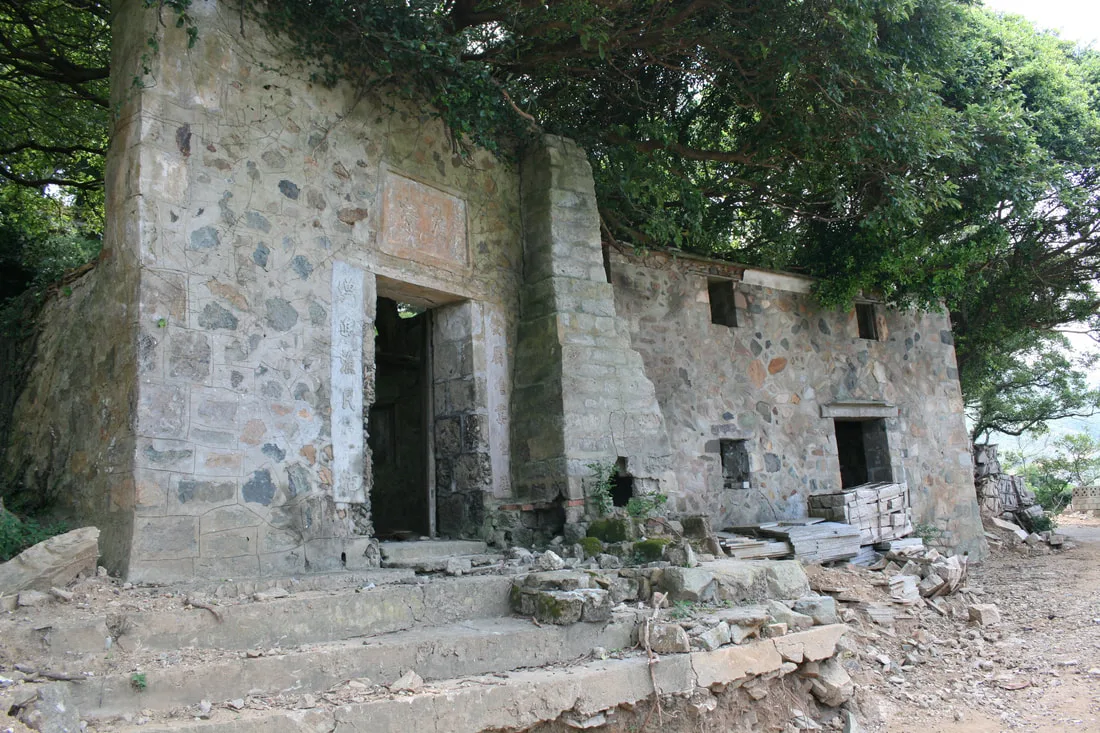
Near the fishing port at Daqiu Island you can find quite a few abandoned houses, leftover from a fishing village that housed close to 300 people but is now abandoned. (Read more)
Beigan Island 北竿島

Beigan Island is one of the two largest Islands in Matsu (officailly Lienchiang County, Taiwan), and has some of the best preserved traditional stone made fishing villages on the islands. There are also many historical military sites, as the islands were part of the front line during the Chinese Civil War. It is easily accessible via airplane or boat from Taipei.
Tangqi Village 塘崎村

Tangqi Village is the largest and most modern village on Beigan Island. Traditional stone houses have largely been replaced by modern buildings. This town has the airport, post office, government buildings, and lots of restaurants, not to mention 7-11, one of only two on the island. (Read More…)
Qinbi Village 芹壁聚落

Qinbi village in Beigan is one of the most popular tourist sites on the islands, and is known as “A Mediterranean Village in Matsu” and “the most representative traditional architecture in all of Matsu, with well-preserved houses that are the focus of attention by architecture, art, and culture circles in Taiwan and overseas.” (Read More…)
Mastu Broadcasting Station 馬祖廣播站

Much like the famous Beishan Broadcasting Tower in Kinmen, the Matsu Broadcasting Tower is a tower with many megaphones that broadcasts anti-communist propaganda and popular Taiwanese music to China, only a few kilometers across the water. Now there is an artsy display on the side of the road. (Read More…)
Mount Bi 壁山

Mount Bi is the highest Island in the Matsu Islands and has great views to the east. You can’t get a 360 view because there is a military base on the tip top and taking photos there is not allowed. (Read More…)
War and Peace Memorial Exhibition Center 戰爭和平紀念公園主題館

Located at the back of Houwo Village, the War Memorial Peace Park displays weaponry, strongholds, and military tunnels. Entrance to the war museum is free, and it is the best place to understand the war history of Matsu. (Read More…)
War and Peace Memorial Park 戰爭和平紀念公園

If you keep traveling past the exhibition hall, you will find a park filled with all kinds of retired war machines. Here you can learn more about the war machines that help protect Matsu in the recent past. (Read More…)
Nangan Island 南竿島

Nangan is the largest Island in the Matsu Archipelago. Besides being the main transportation hub to the other islands in Matsu, it also has traditional stone house villages, military museums, a giant statue of Mazu, a variety of local food, and much more to explore. You can check out our full guide to Nangan Island here.
Mazu Religious and Cultural Park 媽祖宗教文化園區

The Mazu Religious and Cultural Park mainly consists of a large statue of Mazu and the temple where Mazu’s body was buried. The statue of Mazu is 28.8 meters tall and is the tallest statue of Mazu in the world. It was completed in 2008. (Read more…)
Zhenghe Daidan Memorial Park 枕戈待旦紀念公園

When you come into Nangan by boat, you are greeted by a giant sign on a hill that says “Sleep on your spears” (Zhenghe Daidan 枕戈待旦). Nangan was and is very much a military island.
You can also see a statue of the late KMT dictator Chiang Kai-shek with a giant staircase winding up to him. (Read more…)
Magang Qinguang Night Market 馬港親光夜市

Magang Qinguang Night Market is probably the only real night market in Matsu. It is a street in Magang Village, with both sides filled with restaurants and tourist shops. There is also a 7-11 here. (Read more…)
Matsu Tianhou Temple 媽祖天后宮

The Sea Goddess Mazu’s body is thought to have washed up on shore near here, and her corpse was placed in this temple. Her real name was Lin Moniang, and she is thought to have lived in the late 900s AD, which would mean this temple is very old. Now there are many Mazu temples around Taiwan and around the world. (Read more…)
Jinsha Village 津沙聚落

Jinsha village is perhaps the best preserved traditional stone village in Nangan. Much of Nangan has been modernized, but you can still find a mostly preserved historical village here. (Read more…)
Iron Fort 鐵堡

Iron Fort is one of the most popular historic military attractions on Matsu. It is completely open to the public, In its time, it also saw some real action from Chinese amphibious soldiers. (Read more…)
Beihai Tunnel 北海坑道

Beihai Tunnel is a nearly 1km long tunnel connected to the sea that was used to safeguard ships from artillery and air raids. Now it is a tourist destination, and canoe tours are available. (Read more…)
You can book a Beihai Tunnel Rocking Boat experience
here.
Dahan Stronghold 大漢據點
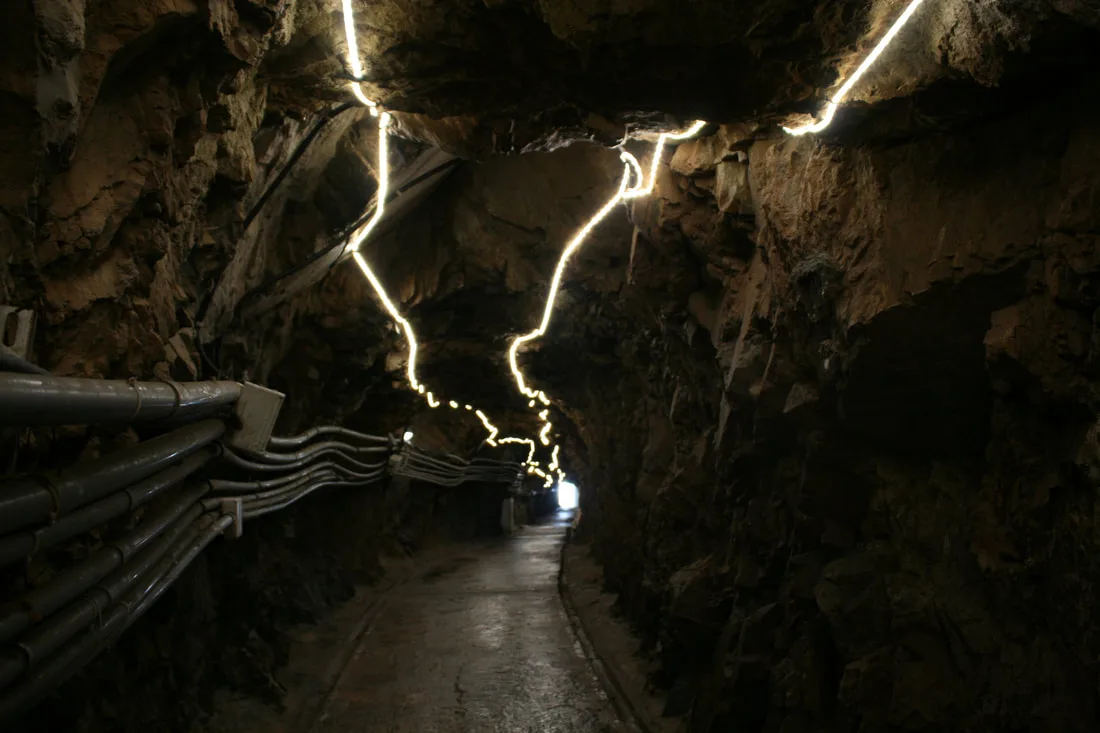
Dahan Stronghold is likely the largest fort/tunnel system open to the public in Matsu. Inside you can see old artillery platforms and feel what it was like to be a soldier in Matsu during the Chinese Civil War. (Read more…)
Jieshou Village 介壽村

Jieshou village is the largest village in Nangan with the most modern amenities, such as Bafang Dumplings, 7-11, and a fruit and vegetable market. (Read more…)
Tunnel 88 八八坑道

Tunnel 88 is an old tunnel that was once used for the military but is now used to ferment local wine and whiskey. (Read more…)
Niujiao Village 牛角聚落
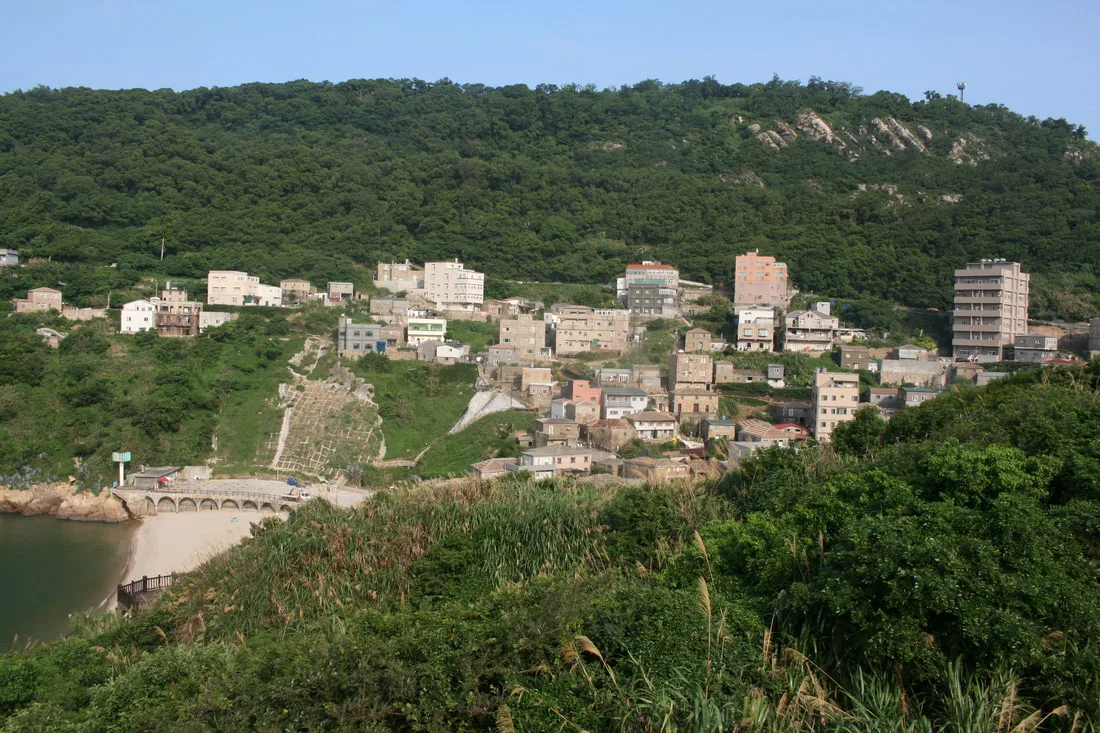
Niujiao is also a historic stone village on the northeast coast of the island. It has some well preserved stone buildings, and the beach here is popular for watching blue tears. (Read more…)
Mt. Yuntai 雲臺山

Mt. Yuntai is the tallest mountain on Nangan and has the best views of the island. There is also a war museum here that is only open to Taiwan nationals.
(Read more…)
Matsu Folk Culture Museum 馬祖民俗文物舘

The Matsu Folk Culture Museum in Nangan is definitley worth a visit. The outside of the building is meant to look like a traditional stone village. There is also some interesting stuff on the inside too. The entrance fee is 40 NT per person, and it is open until 5 PM. (Read more…)
Chiang Chin-kuo Memorial Hall 經國先生紀念堂

The Chiang Ching-kuo memorial hall is one of the weirdest sites on the island. We all know that CKS memorial hall in Taipei, but his son’s memorial hall in Nangan is much less well known. (Read more…)
Things We Missed:
Activites:
Dongyin Island:
- Northernmost point in Taiwan 國之北疆
- Sanshan Fort 三山據點
- Andong Tunnel 安東坑道
Dongju Island
- Dongshou Lighthouse 東獸燈塔
- Secret Little Bay 神秘小海灣
- Fuzheng Village 福正聚落
- Dapu Ancient Village 大浦村古聚落
Xiju Island:
- Kunqiu Sand dunes 坤坵沙灘
You can search for other tours and activities on KKday here or Klook here.
Thanks for reading! For our full blog on Beigan Island click here, for our full blog on Daqiu Island Click here, or for our full blog on Nangan Island click here.
You can also check out our full guide to all of Taiwan’s outer islands here.
You can also check out our full travel guide to Taiwan here.
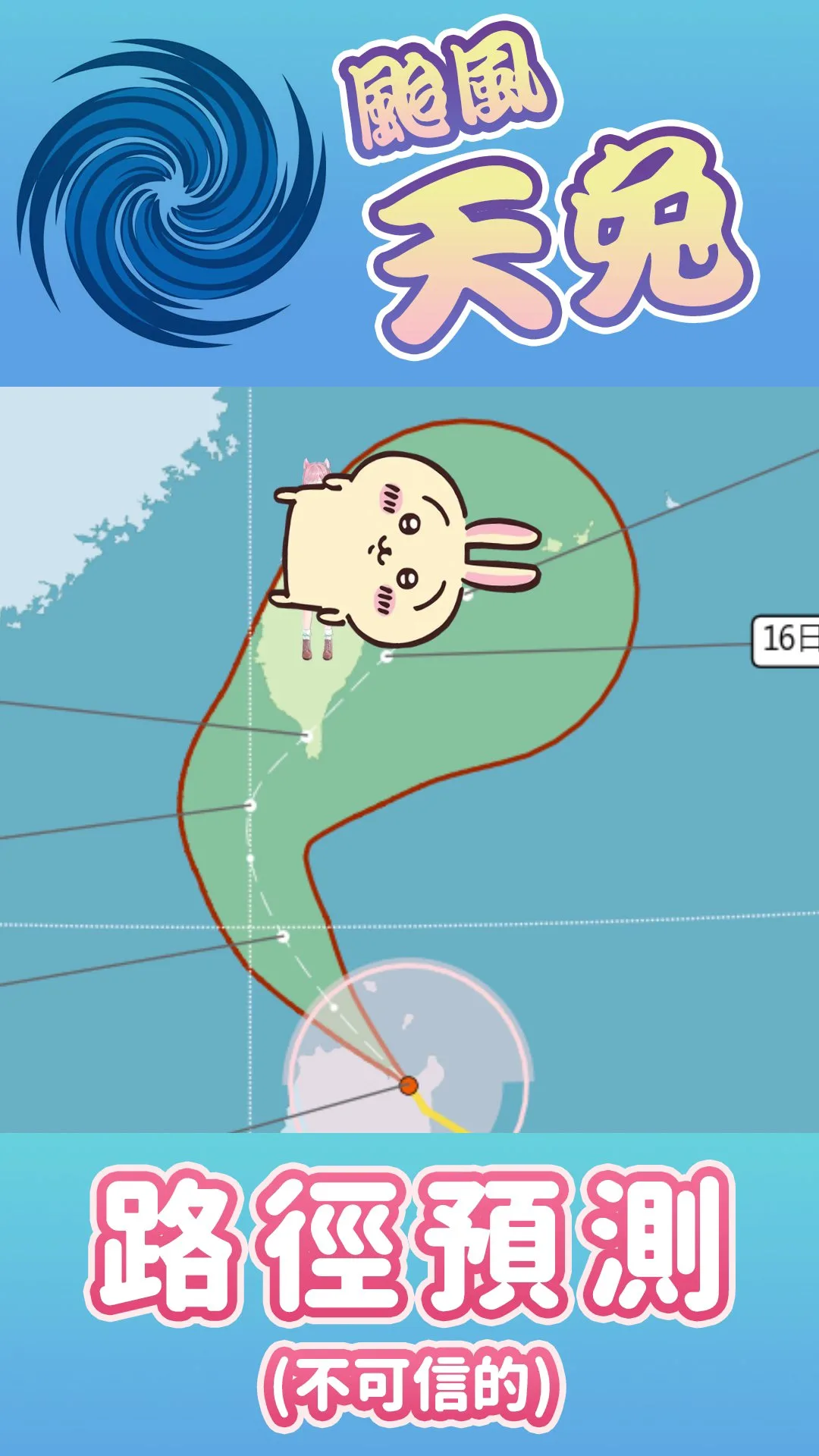
Typhoon Usagi was the 25th tropical cyclone of the 2024 Pacific Typhoon Season. It made landfall in the Philippines and dumped rain onto Southern Taiwan before dissipating into oblivion. For the first time in recorded history, four tropical cyclones simultaneously existed in the Western Pacific during the month of November. In this blog, we will share some memories of this storm and its impact on Taiwan.
Storm Formation and Path
Tropical Depression Igme became a depression on November 9th, 2024, and was upgraded to a tropical storm on November 10th. On November 12th, it strengthened into a Typhoon. Usagi was one of four tropical cyclones to simultaneously exist in the Western Pacific during the month of November for the first time in recorded history. Two people were killed due to the storm in the Philippines but none in Taiwan.

Early forecast models predicted that the storm would graze the east coast of Taiwan as a strong Typhoon. As you will see, that did not happen.

Originally the track for the Typhoon showed that it would move fast and strong toward Japan.

However, the Typhoon deviated west from the original track to the west part of Taiwan, where Typhoons go to die.

Originally it was predicted that the Typhoon would continue east after hitting the Hengchun Peninsula.

However, the Typhoon died before it could make landfall. It was downgraded back to a tropical depression and dissipated right before the center of the storm reached the Hengchun Peninsula.
My Experience
I was in Taipei during this storm. It was calm, dry, and windy in Taipei from November 15-17th. I was afraid my trip to Hualien would be ruined. However, the typhoon had very little effect on Hualien which mostly remained dry, so my vacation plans were salvaged. The Typhoon quickly disappeared and Taiwan began to see northeasterly winds due to another Typhoon down south, Typhoon Manyi.
Rainfall Totals

Over 400 mm of rain fell in southern Taiwan due to the Typhoon, which is not a whole lot compared with other Typhoons.
Radar Track and Rainfall Totals
Meme

Usagi means rabbit in Japanese, so someone had to make this meme.
Safety Precautions During a Typhoon
- Secure loose outside objects
- If you live on the first floor of a flood-prone area, move as many valuables and important objects to higher floors as possible.
- Park your car/scooter on high ground
- Avoid going outside for your safety
- Stay out of the mountains
- Stay away from the ocean
- Have enough dry food and water ready for three days (72 hours) in case water and electricity are cut off.
If you follow the above rules, most Typhoons in Taiwan will not be dangerous. Also, most buildings in Taiwan are built with reinforced concrete that can withstand even the strongest winds, so stay indoors and you will be fine.
Conclusion
This was a small storm and died quickly after dumping a moderate amount of heavy rain on southern Taiwan for about 24 hours. This storm is sure to be quickly forgotten in Taiwan, but we are all grateful it did not turn out to be worse.

The Penghu Islands (澎湖英文)are the best island vacation getaway in Taiwan. Only an hour’s plane ride from Taipei, these islands provide multiple world-class beaches, as well as snorkeling, diving, windsurfing, and other water activities. In addition, there are lots of restaurants, interesting historical sights, and accommodation options on these islands. Overall it is an ideal island vacation getaway that you should not miss.
Historical Background:
The Penghu Islands were historically an important strategic position for trade and military defense in the area. The Dutch, French, and Japanese all led campaigns against these islands. The Dutch first invaded Penghu in 1622, but soon after retreated to Anping after a treaty was made with the Ming Dynasty.
Konxinga later took control of Penghu and Taiwan after defeating the Dutch in 1661, Later, Kongxinga’s kingdom fell to the Qing Dynasty.
In 1885 during the Sino-French war for control of Vietnam, the French sent a fleet to Taiwan but failed to take the island. Later they attacked the Penghu Islands and occupied them for a short time, before retreating to Vietnam due to the Treaty of Tianjin.
After Japan took control of Korea in 1894, they also attacked and occupied Penghu in 1895, after which the Qing Dynasty ceded the islands to them.
After World War II, the islands were given to the ROC government, which retreated to Taiwan after the Chinese Civil War and still controls the islands today under a free democratic government.
Activities:
Besides soaking in sun rays at the beach, there are many activities available in Penghu such as snorkeling, diving, wind surfing, sailing, canoeing, wakeboarding, massage, yachting, glamping, trampoline Water Sports, SUP / Paddle Boarding, kayaking, night fishing and more on Klook here or KKday here.
Tours:
There are many tours and activities available on the islands such as Island Hopping Tour, starlight Marine Ranch, seafood Barbeque, Sheraton Four Points Eatery, Dragon Palace Intertidal Zone, Jibei Sand Tail, and many more options on Klook here or KKday here.
For more information, look at other tour/ferry sites or book a personalized tour with Klook here or KKday here.
Where to Stay:
We have stayed at and recommend Han’s Hostel which had great service and is right next to Shanshui Beach, the best beach in Penghu (you can book on Agoda here, Booking.com here, or Trip.com here) a newly renovated homestay in downtown Magong with great service and great prices (you can book on Agoda here or Booking.com here).
Looking for a hotel? We recommend booking through Agoda here, which provides the best quality selection of accommodation on the islands.
You can also find out more about where to stay in our Taiwan hotels guide here.
When to go to Penghu:
The best time to go is Autumn. Spring is also a nice time to go, but there is a greater chance of spring showers during that time. The summers may be too hot, and winters too cold and windy.
How to get there:
By Plane:
There are daily flights from Taipei Songshan, Taichung, and Kaohsiung airports to Makung. the flight takes roughly under an hour. Rates can range from around 2200-6000 NT for a round trip. There are also flights to and from Chiayi, Tainan, Kinmen, and Chimei, with charted flights to Hong Kong starting September 2018.
There are flights to and from Taipei Songshan Airport three times a day via Uni Air. You can book flights on KKday here, Trip.com here, CheapO Air here, or Kiwi here.
By Boat: There are daily ferries from Chiayi and Kaohsiung. A one-way trip takes about 4 hours from both locations. A one-way ferry from Kaohsiung costs about 900 NT for just a reclining seat, and a one-way ferry from Chiayi costs about 1000 NT.
You can book ferry boat tickets from Chiayi on Klook here, or ferry boat tickets from Tainan on KKday here.
Getting Around on the Islands:
By Ferry Boat: The only way to get to smaller islands without airports is by ferry. You can check Klook here or KKday here for ferry tickets or buy them at the harbor.
By Scooter: We recommend taking a scooter as the most efficient and convenient type of transport on the islands. However, most places require a local scooter license. You can rent a scooter for Penghu on Klook here or on KKday here. You can also check out our scooter rental guide here.
By Car/taxi: A car is also sensible in Penghu because the main island is pretty spread out. You can rent a car for Penghu on Klook here or on KKday here. You can also check out our car rental guide here.
By Bus: a bus is possible on the main island, but it will be slower and more unpredictable.
By Bicycle: Cycling is the best way to enjoy Taiwan’s landscapes if you have the time and energy. Looking for bicycle rentals in Taiwan? You can search on KKday here and search for tours on Klook here. You can also check out our Taiwan cycling guide here.
Map:
Please see a list of places we will cover in the map below:
What to see and do in Penghu?
Please note that the following list of places is still a work in progress. We will be updating the below places with more information as time goes on.
Guanyin Temple Recreation Area 觀音亭親水遊憩區

Guanyin Temple Swimming Area (aka. Guanyinting, Guanyin Temple Leisure Park, and Guanyinting Recreation Area), is one of the main tourist attractions in Magong and Penghu. It is a relaxing place to enjoy views of the ocean and the sunset, as well as other activities such as jogging, swimming, parasailing, and fishing. For our full blog on this area, click here.
Magong Ancient City Wall 馬公舊城墻

Next, we visited the historic walls of Makung. Among the many historical sights in the city, perhaps some of the most significant are the remains of the ancient wall surrounding the city during the Qing Dynasty, as well as the first military dependents village established by the KMT surrounding these old walls.
Check out our full blog on Magong City Walls here.
Duxingshi Village 篤行十村

Above is a view of the restored Duxingshi Village, which is now open for tourists, taking them back in time to the KMT-dependent village era. For our full blog on this place, click here.
Penghu Trans-Oceanic Bridge (Penghu Great Bridge) 澎湖跨海大橋

One of the most iconic tourist spots in Penghu is the cross-ocean bridge. It is the longest bridge in Penghu, but by no means is it the longest bridge in Taiwan. I was actually kind of disappointed at how short it was. Anyway, everyone takes a selfie here, and so should you.
Chixi Columnar Basalt 池西柱狀玄武岩

You don’t have to go to Chixi or even Siyu Island to see columnar basalt in Penghu, the stuff is everywhere! It has become a major attraction for Taiwanese because this geological formation is very rare on the Taiwan mainland. However, coming from the western US I have seen this stuff a million times. Devil’s Tower in Wyoming is way more impressive.
Dayi Temple Sea Turtles 大義宮的海龜

Dayi Temple Lies in the northern part of Siyu Island in Penghu County, Taiwan. On the outside, it is a normal Taiwanese Daoist temple like any other, but due to its collection of live endangered sea turtles, whale bones, rare marine specimens, and coral rocks kept in an underground chamber, it has become one of the main tourist attractions on the archipelago.
The morality of keeping these endangered species in the temple chamber has been a topic of debate over the past few years, and it is clear to see that they are not living in an ideal environment. This, including allegations of animal rights violations, is discussed further in our full blog of the temple here.
Siyu East Fort 西嶼東臺
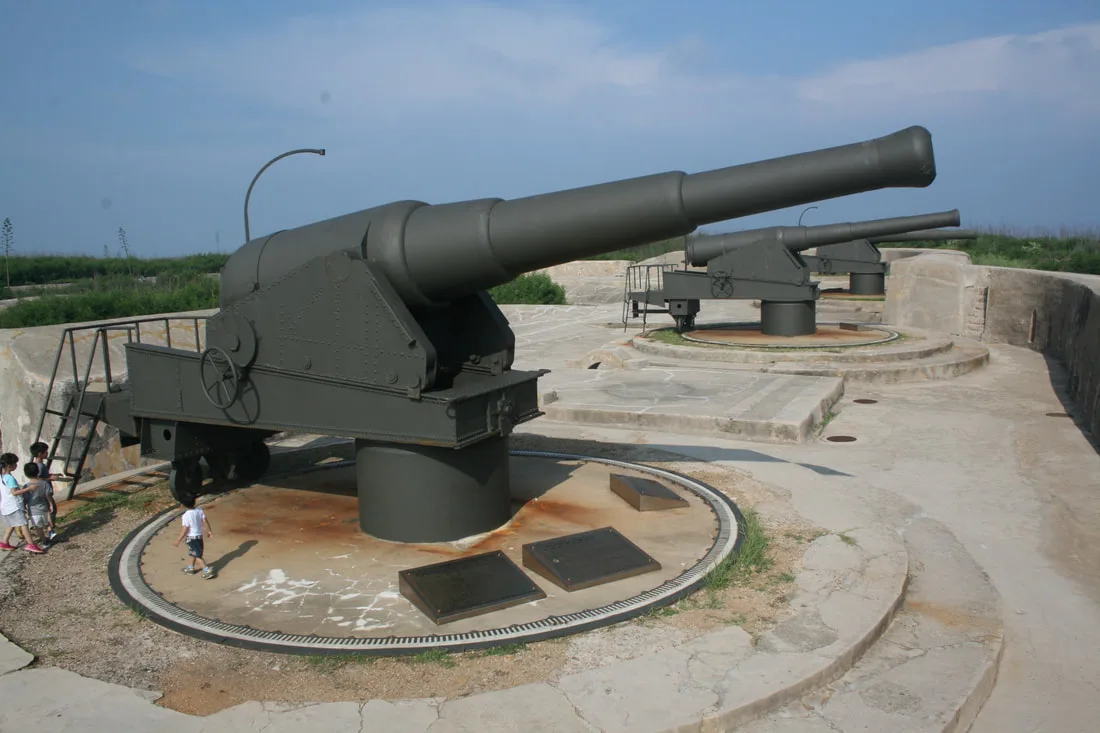
Siyu East and West Forts are some of the best-preserved fortifications in Taiwan dating back to the Ming Dynasty. They provide a rich history of the many invasions of Taiwan throughout the ages. Currently, they are open to the public if you can get yourself over to the west side of Penghu. Siyu West Fort (pictured above) is way better, so if you have a choice between the two spend your time there.
Siyu West Fort 西嶼西臺
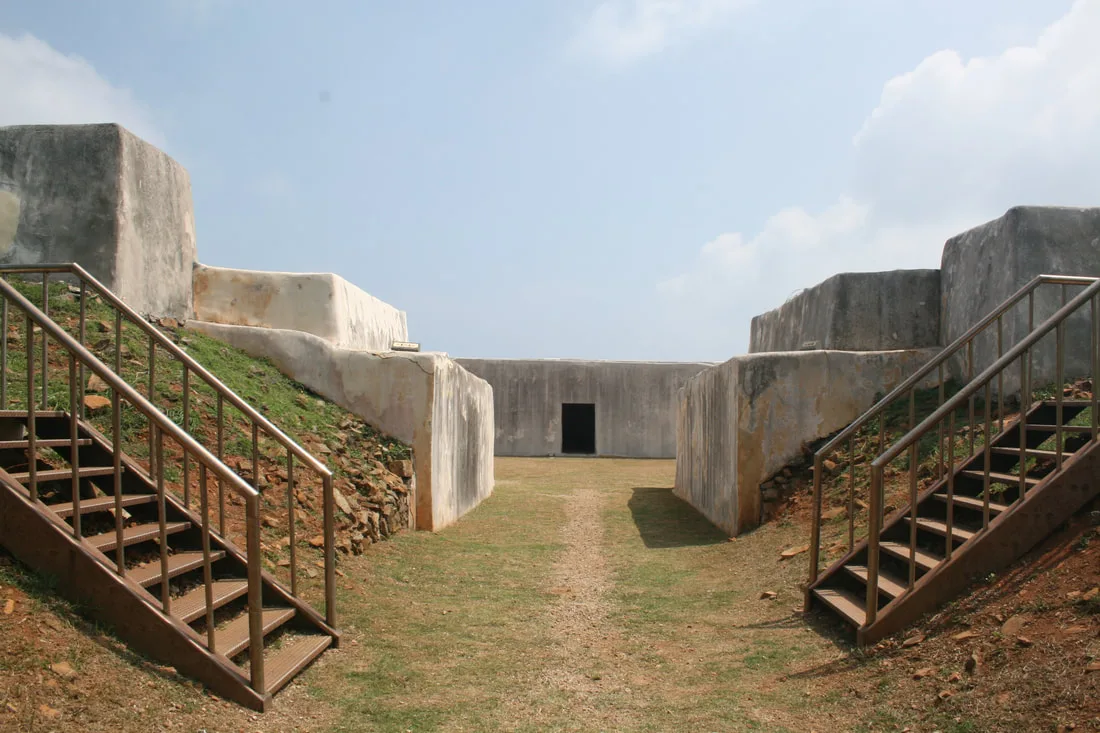
A view of Siyu East Fort. This fort is free to visit, but there are no cannons and not much else to see, but still an interesting historical visit. For our full blog on these forts, click here.
Xitai Fake Cannon 西臺餌砲

Xitai Fake Cannon is an interesting artifact on Siyu Island left over from WWII, used as a decoy by the Japanese to confuse American bomber crews. The fake cannon is a witness to the war as well as a reflection of Wai’an’s strategic geographic importance during WWII.
Yuwengdao Lighthouse 漁翁島燈塔
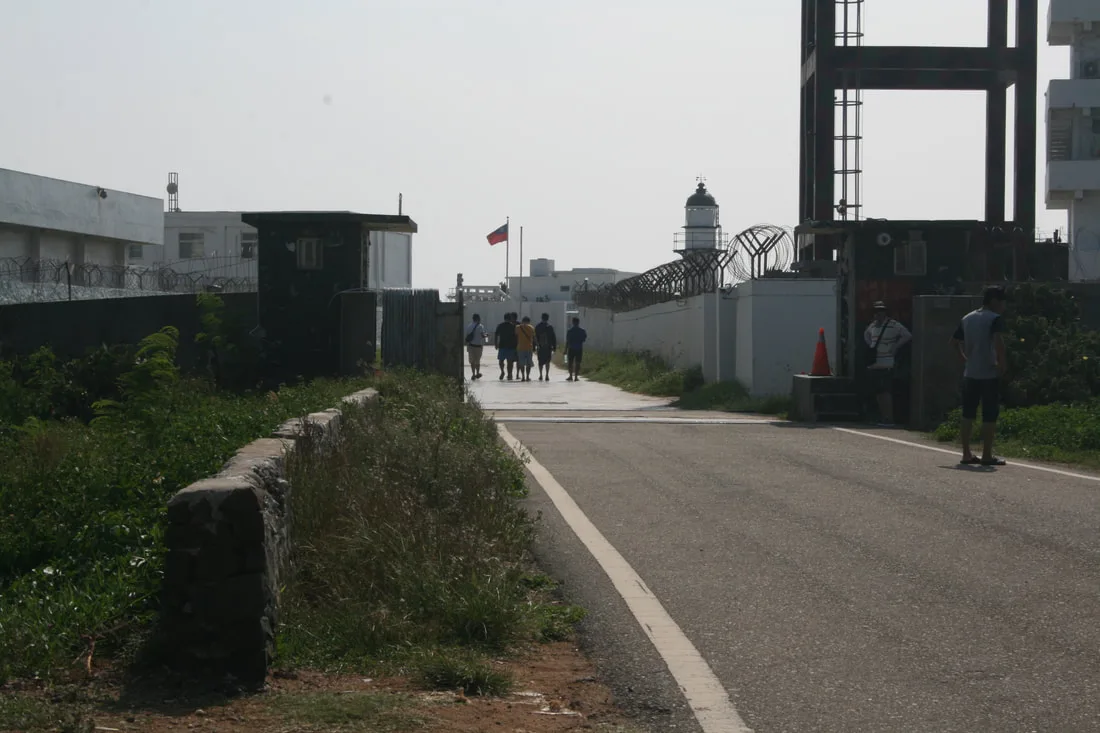
Yuwengdao Lighthouse is another major attraction in Penghu, located on the very western part of Siyu Island. You can’t go to the top of the lighthouse, but you can enjoy the nearby ocean views.
Erkan Village 二崁聚落

Erkan Historical Village is a unique place in Taiwan that preserves nearly 300 years of Southern Min culture. Isolated and cut off from the rest of Taiwan for quite some time on Siyu island of Penghu County, the village is a living museum for visitors. Every home is built in traditional red brick Southern Min style, offering a unique splice in time. Click here for our full blog on the village.
Tongliang Great Banyan 通梁古榕

In this small village of Tongliang on Penghu Island is an ancient banyan tree that covers almost an entire city block. It is the oldest tree in Penghu, dating back to around 1700 when there was a shipwreck nearby. According to legend, the only thing recovered was a banyan sapling that was later planted and became this huge tree. Near the tree are also some food stands that you can check out if you are hungry.
Hsiaomen Whale Cave 小門鯨魚洞

Whale Cave is a natural basalt sea cave on the north side of Hsiaomen Island in Penghu (Shomom 小門嶼), and one of the many tourist attractions in the area. According to some it looks like a whale, but that is not the true origin of its name.
The actual reason for the cave’s name “Whale Cave” is that, a long time ago, a whale got stuck in the cave and died. According to local legend, a bone from that whale is now inside Dayi Temple. See more about Whale Cave in our blog here.
Penghu Aquarium 澎湖水族舘

At Penghu Aquarium you can see sea turtles, rays, and dolphins. It also includes a glass tunnel underneath the main tank.
You can buy tickets to the aquarium on KKday here.
You can also book a night to sleep in the aquarium here.
The Best Beaches in Penghu 澎湖最佳沙灘

Penghu’s beaches could easily beat any beach on the main island of Taiwan. The water is clear, the sand is golden, and the weather is great. In this blog, we will share a list of the best beaches in Penghu, so you can more effectively spend your time on your next trip to this island paradise. Check out our full Penghu Beach guide in our blog here.
Penghu Shanshui Beach 澎湖山水沙灘 – The Best Beach in Penghu
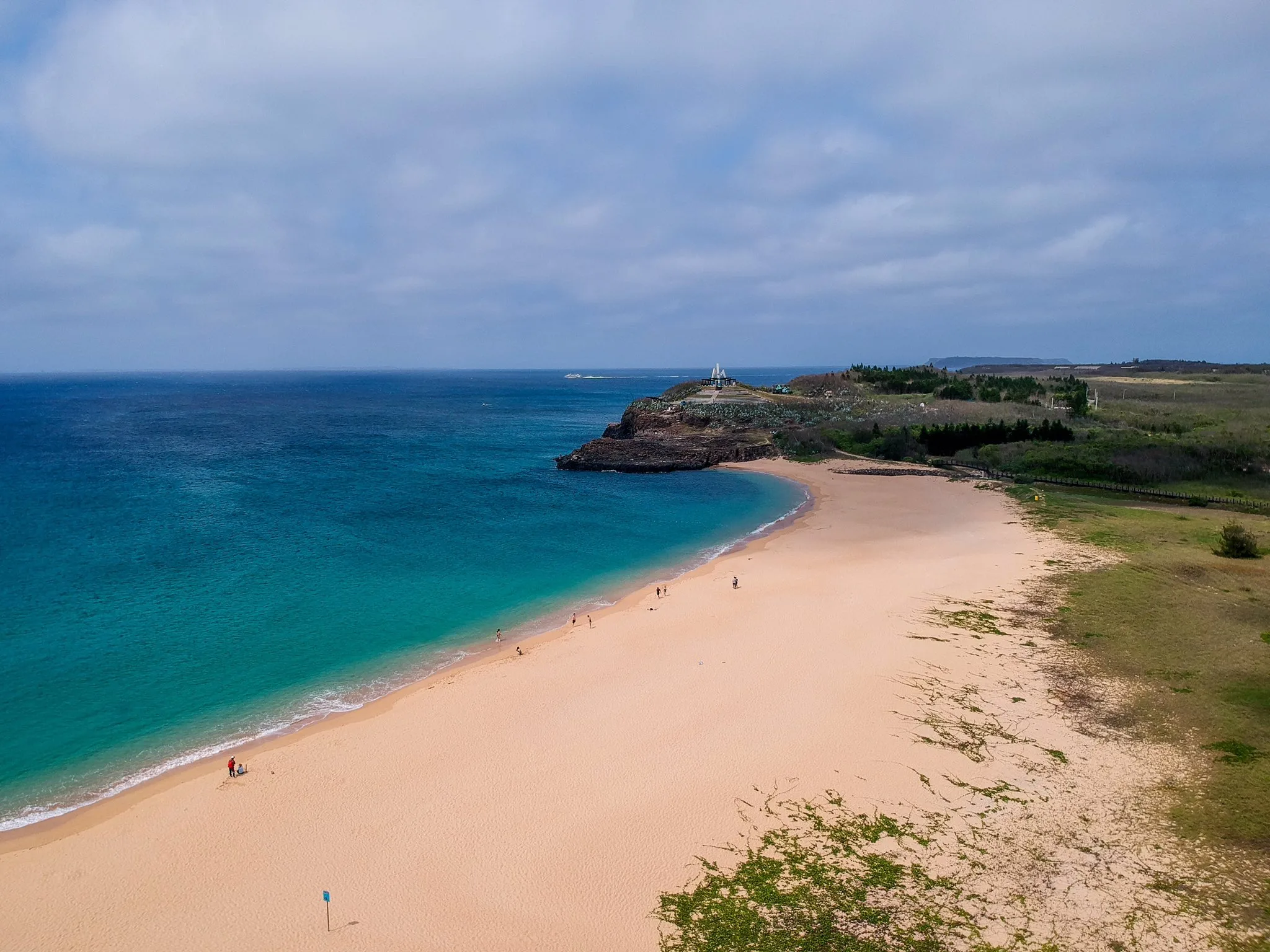
Shanshui Beach is the best beach in Penghu. The sand is white, the waves are big, and the water is clear and warm. Popular activities here include snorkeling, swimming, surfing, and SUPing. It is a great beach destination if you come to Penghu. Check out our full blog on this beach here.
Aimen Beach 隘門沙灘

Aimen Beach is the longest beach in Penghu and may be the most popular beach in Penghu for water activities (澎湖隘門沙灘及林投公園). Popular activities include jet skiing, surfing, windsurfing, and snorkeling. The beautiful golden sand and clear blue waters are also great places for taking photos. In addition, Lintou Forest Park next to the beach is also a nice place to relax. It is an amazing beach destination in Penghu. Check out our full blog on this beach here.
Neian Beach 內垵遊憩區
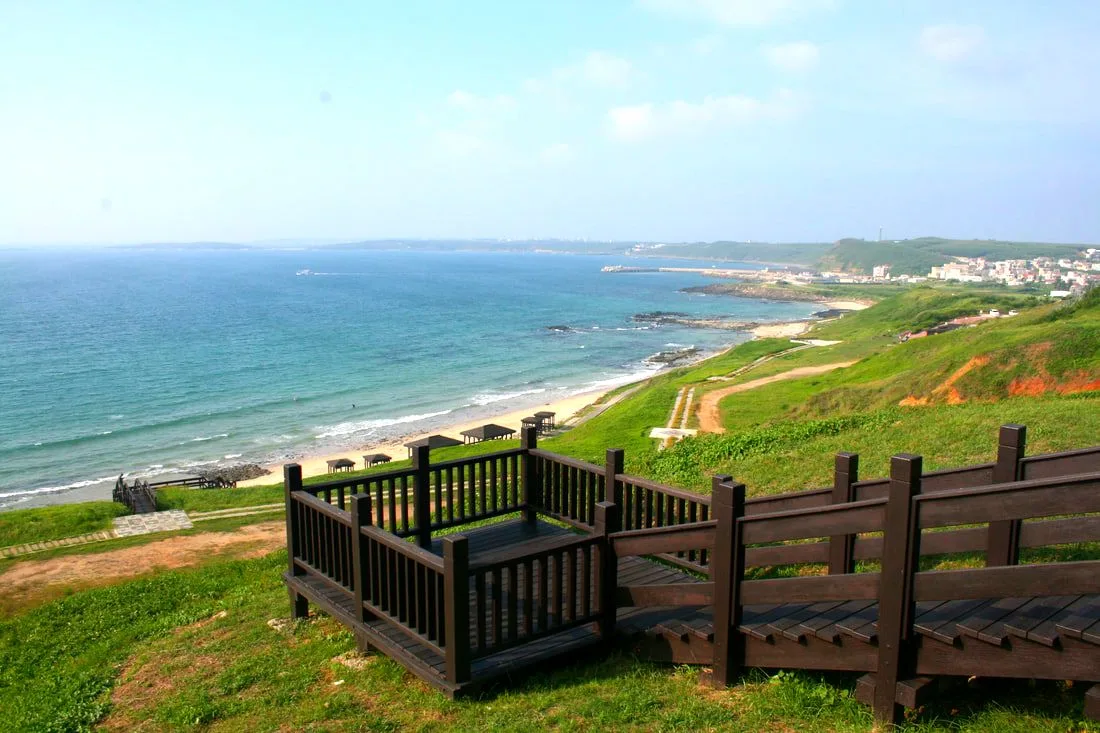
Neian Beach is perhaps the most picturesque beach in Penghu. The entrance is perched high on a hill, giving you great views of the area. There are also many pavilions and wooden boardwalks here. Overall it is a great place for taking photos.
Penghu Shili Beach 澎湖嵵裡沙灘

Shili Beach in Penghu (澎湖嵵裡沙灘) is an ideal beach getaway with clear waters and white coral sand. Here popular activities include swimming, kayaking, and SUPing. The best part is usually there are few people here. It is definitely worth a stop on your next trip to Penghu. Check out our full blog on this beach here.
Lintou Golden Beach 林投金沙灘

On the other side of Aimen Beach is Lintou Golden Beach, which is much less crowded but also has great golden sand. You can check out our guide to Lintou Golden Beach here.
Lintou Park 林投公園

Lintou Park is a forest park that sits right next to Lintou Beach. There is also a beautiful pavilion corridor inside Lintou Park.
Lintou Park saw its first major tree planting in 1946, when over 90,000 Casuarina trees were planted along the coastal area. By February 1953, when the park was officially established, the Casuarina trees had already formed lush greenery throughout the area. The beach at Lintou Park stretches across three villages—Jianshan, Lintou, and Aimen—with a total length of more than 3,000 meters, making it the longest beach in Penghu. It hugs the southern coastline of Huxi Township and boasts stunning scenery. The sand is fine and dense, the water clear, creating a pristine and beautiful “white coral fragment beach.”
Jianshan Beach 尖山沙灘

The beach extends further north all the way to Jianshan Beach 尖山沙灘, which is named after Jianshan Village.
Overall, you have over 3 KM of pristine white sand beach stretching from Jianshan Beach to Aimen Beach, with Lintou Forest Park hugging the shoreline. You can find more info in our blog here.
Moses Parting Sea 摩西分海

The “Moses Parting Sea” in Penghu is a 50-meter-long gravel path connecting the main island of Penghu to Chi Islet during low tide. This phenomenon has been likened to Moses parting the Red Sea in the Bible and has become one of Penghu’s major tourist attractions. It is definitely a must-visit if you come to Penghu. Check out our full guide to this beach here.
Fongguei Cave 風櫃洞

Fenggui Cave in Pengu is a basalt column sea cave named because of the whistling sound it makes as the wind passes by. Here there has also been a tower erected so that visitors can enjoy 360-degree views of the sea cave and nearby coastline. It is definitely a must-visit if you come to Penghu. Check out our full guide to Fenggui Cave here.
Penghu Serpent Head Mountain (Shetoushan) 澎湖蛇頭山
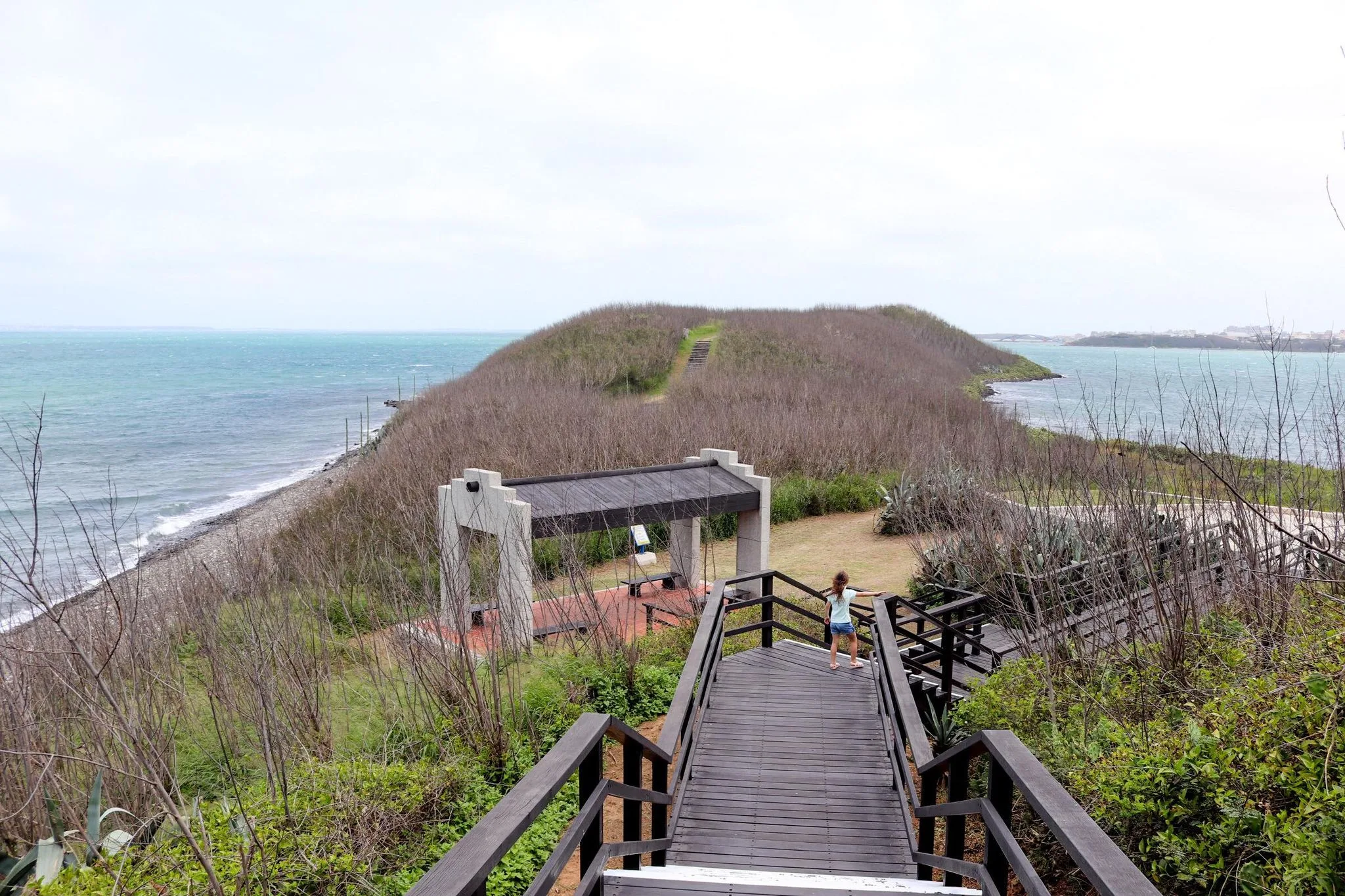
Serpent Head Mountain is the highest point in Penghu and is one of Taiwan’s top 100 lesser peaks. It is also home to the first western fort built in Taiwan; this was the first spot where the Dutch established a trading post in Taiwan before colonizing the island. It also has a memorial to French soldiers and the wreck of a Japanese warship. It is a beautiful and historically important location in Penghu that is definitely worth a visit. Check out our full blog to this area here.
Qimei Island 七美鄉

Qimei is a beautiful island getaway on the southernmost end of Penghu County. You can get there by boat or by plane from Makung. The main attractions there is the iconic double heart rock (Twin Hearts Stone Weir), as well as little Taiwan rock. Getting there is not easy, but it is definitely worth the visit. For our full blog on Qimei click here.
Penghu Rice Wraps 澎湖飯糰

Another thing we tried was the famous purple rice balls sold on the street (pictured above). Inside is some delicious pork, peanut, and fried bread sticks. You should definitely give them a try on your next trip to Penghu.
Activities and Places We Missed:
- Kuibishan Geopark 奎壁山地質公園
- Daguoye Columnar Basalt 大菓葉柱狀玄武岩
- Zhongyang Street 中央街
- Tianhou Temple 天后宮
- Magong Jinguitou Fortress 馬公金龜頭礮臺菜園休閑漁業區
- Xiaomen Geopark 小門地質舘
- Penghu Living Museum 澎湖生活博物館
- snorkeling
- diving
- wind surfing
- sailing
- canoeing
- wakeboarding
- massage
- yachting
- glamping
- trampoline Water Sports
- SUP / Paddle Boarding
- kayaking
- night fishing
- Island Hopping Tour
- starlight Marine Ranch
- seafood Barbeque
- Sheraton Four Points Eatery
- Dragon Palace Intertidal Zone
- Outer Islands:
- Jibei Island 吉貝嶼
- –Jibei Sand Tail 吉貝沙尾
- -Jibei Stone heart Wier 吉貝心型石滬
- Dongji Island 東吉嶼
- -Dongji Lighthouse 東吉燈塔
- -The eye of Dongji 東吉之眼
- -Qiming Temple 啟明宮
- -Japanese Barracks 日軍遺跡
- -Tiger Head Mountain 虎頭山
- Xiji Island 西吉嶼
- Sea Caves on the North Coast 北岸海蝕洞
- Abaondoned village 聚落
- Wangan Island望安鄉
- -Green Sea Turtle Protection Center 綠蠵龜保育中心
- -Tiantai Mountain 天臺山
- -Hua Ancient House 花宅古厝
- -Wangankou Beach 網按口沙灘
- Dongyuping Island 東嶼坪嶼
- -Jinlong Pagoda 金龍塔
- -Chifu Pagoda 池府廟
- -Chifu Temple 池府塔
- Xiyuping Island 西嶼坪嶼
- -Huaniang Temple 華娘廟
- -Sea Stack 海堆
- Hujing Island 虎井嶼
- Hujing Island Columnar Basalt 虎井柱狀玄武岩
- Tongpan Island 桶盤嶼
- -Tongpan Island Geopark桶盤嶼地質公園
- and more on Klook here or KKday here.
- And also the other 70 or so small Islands and Islets in Penghu. Maybe one day this blog will include them all!
Thanks for reading and stay tuned for more of our blogs to come!
To see more of Taiwan’s outer islands, check out our ultimate guide to Kinmen here.
There are many tours available on the islands. For more information, look at other tour/ferry sites or book a personalized tour with Klook here or KKday here.
You can also check out our full guide to all of Taiwan’s outer islands here.
You can also check out our full travel guide to Taiwan here.

